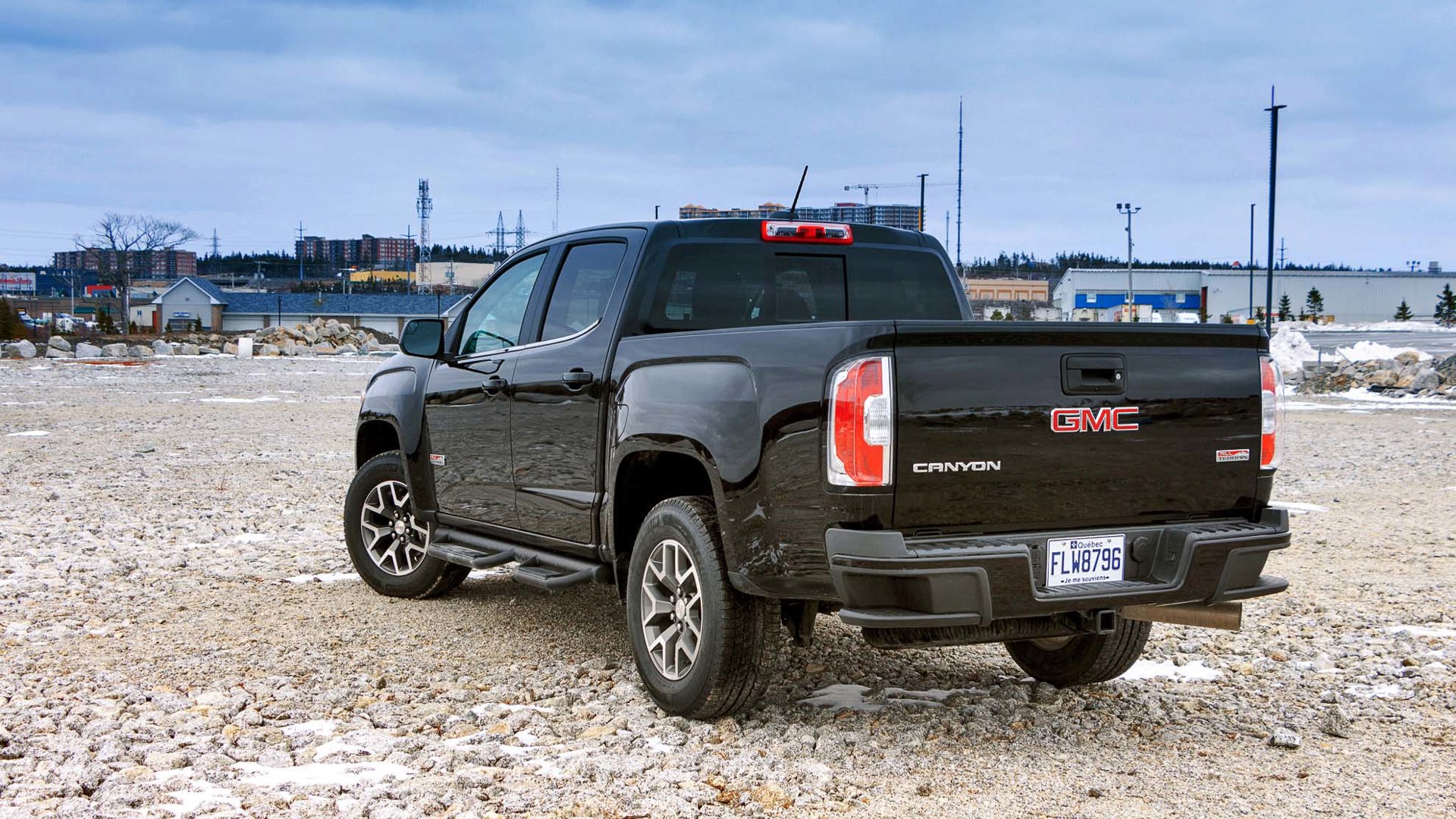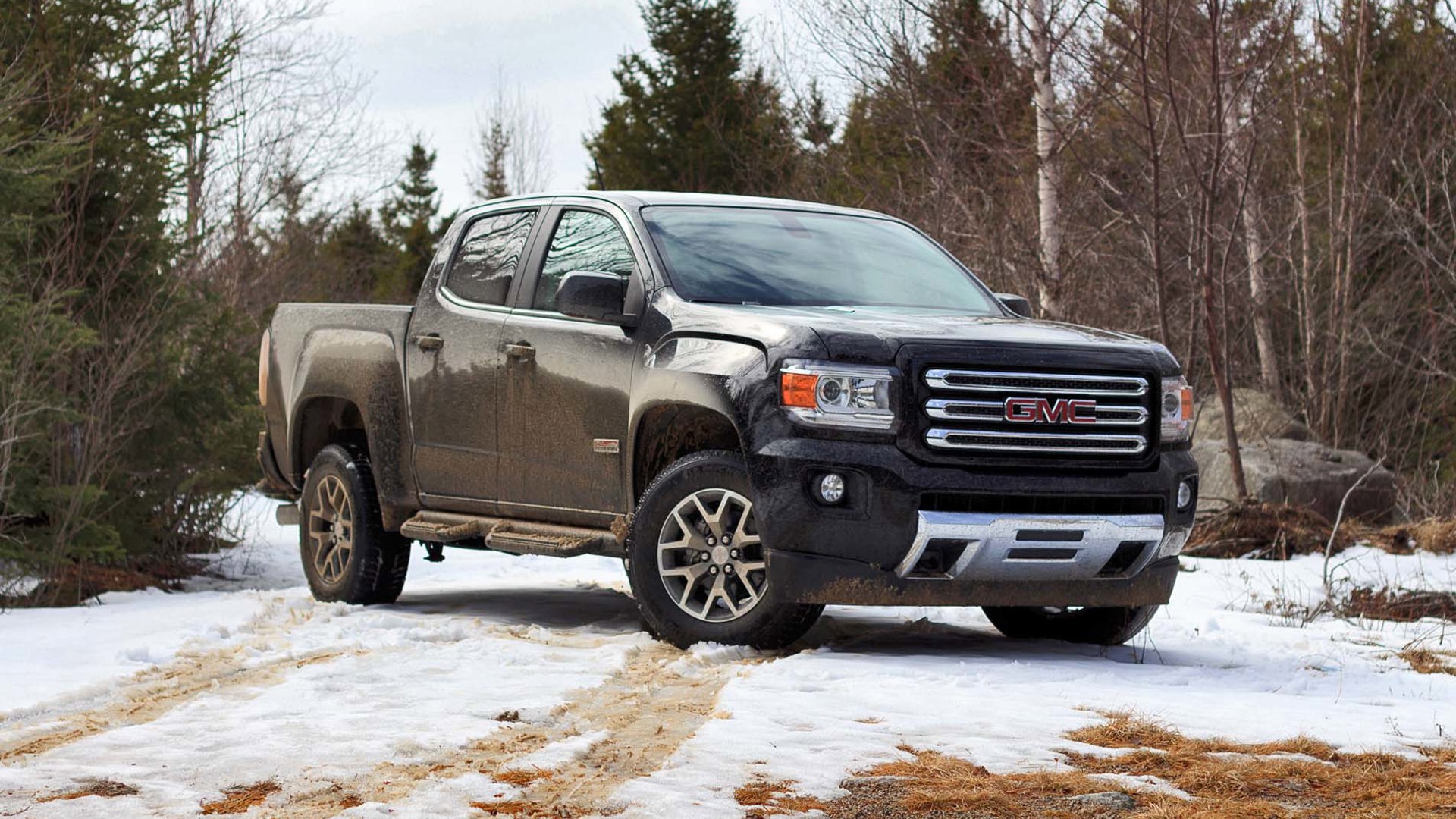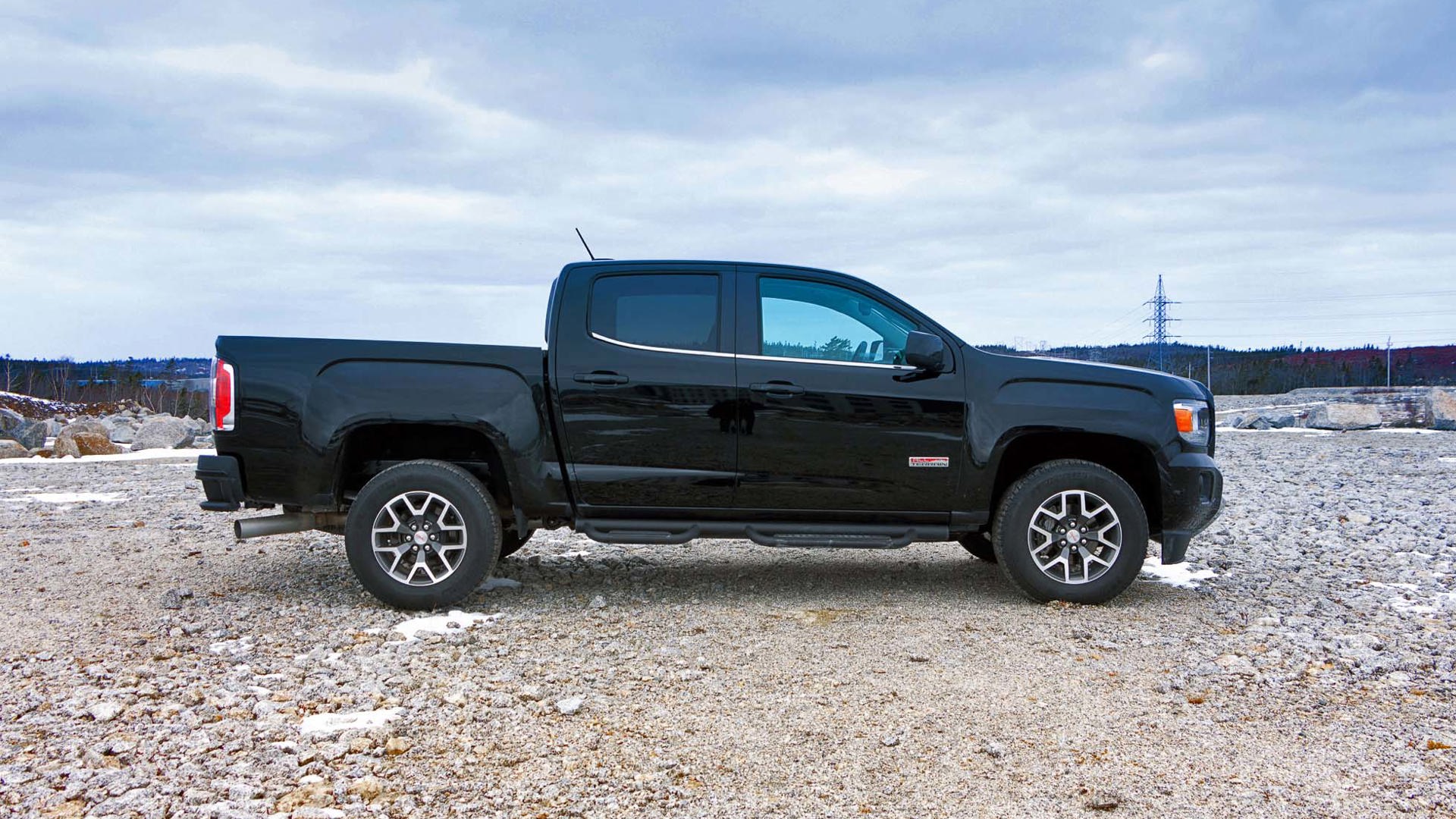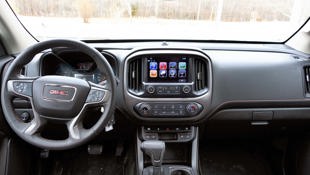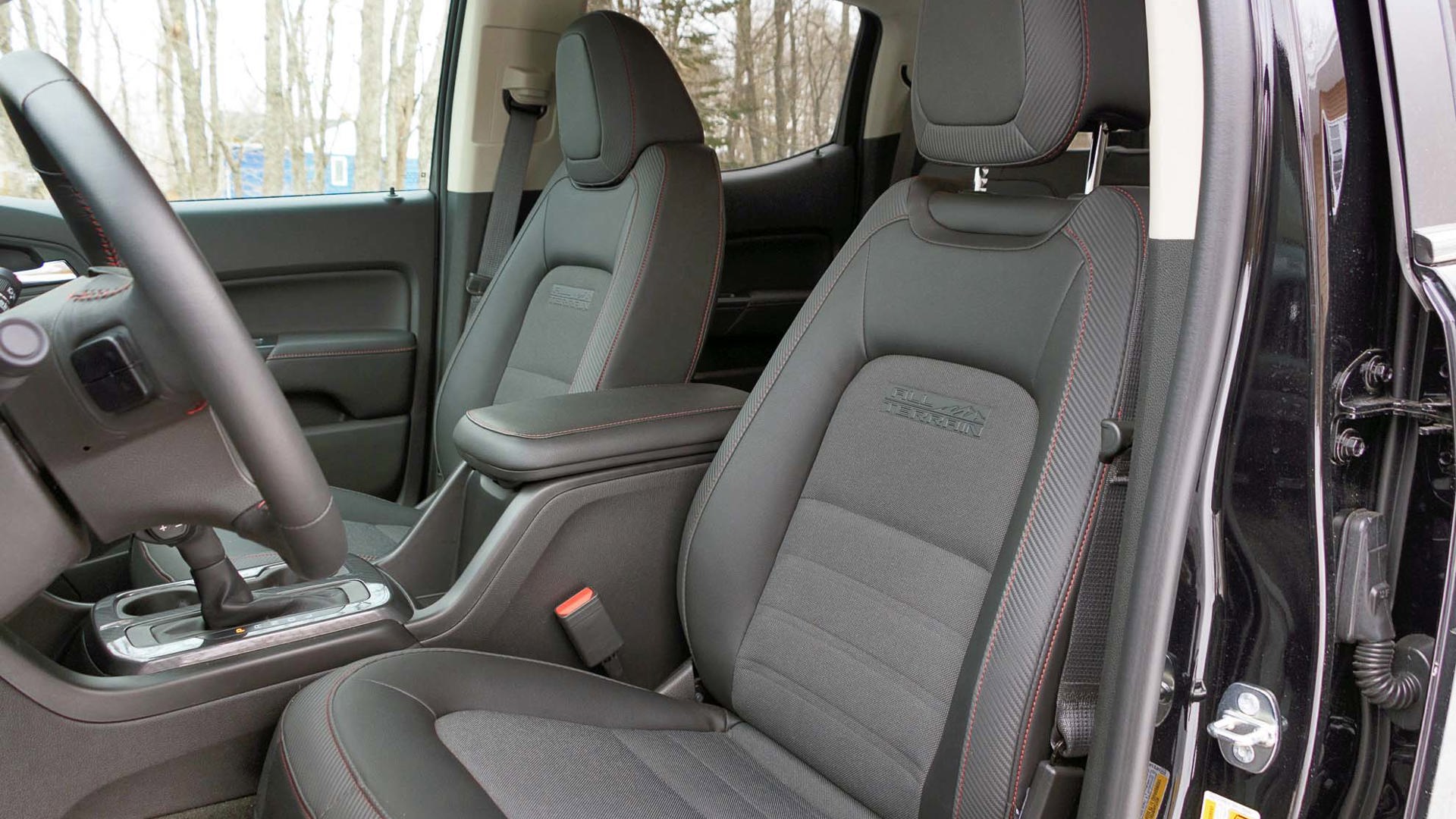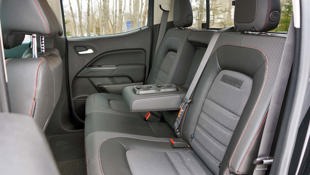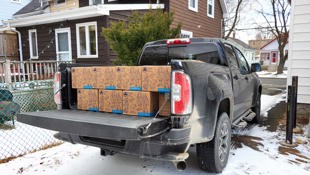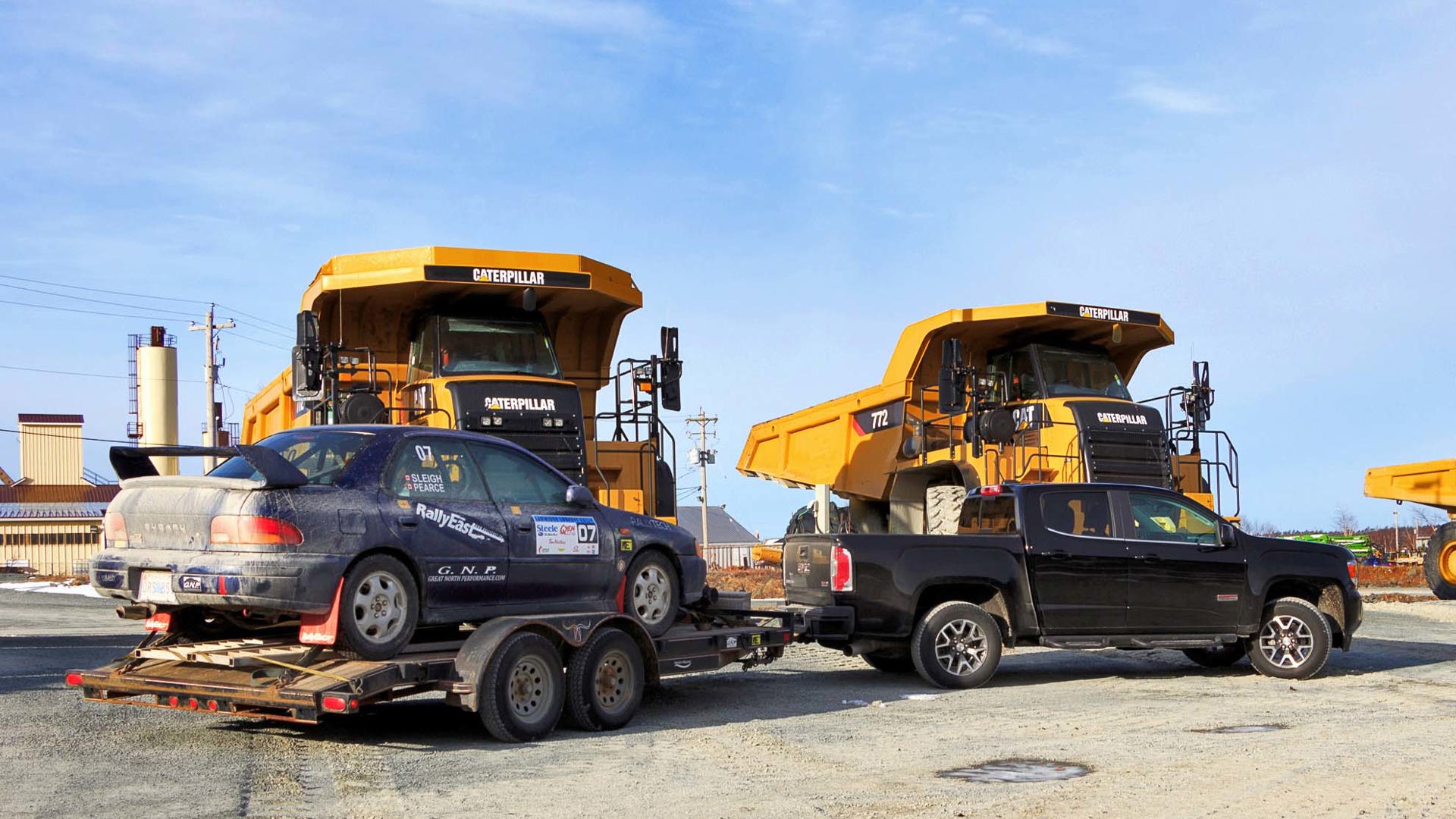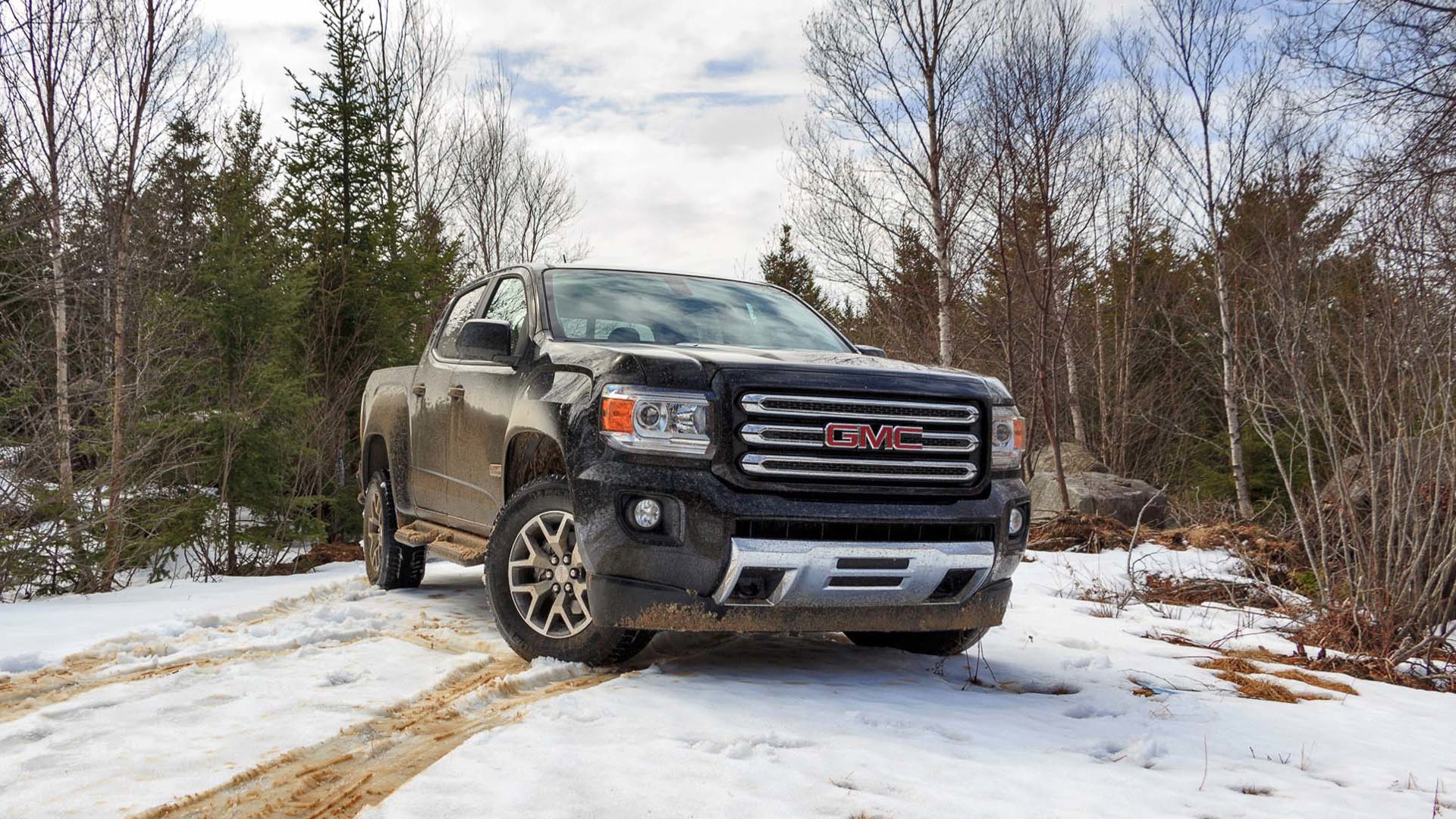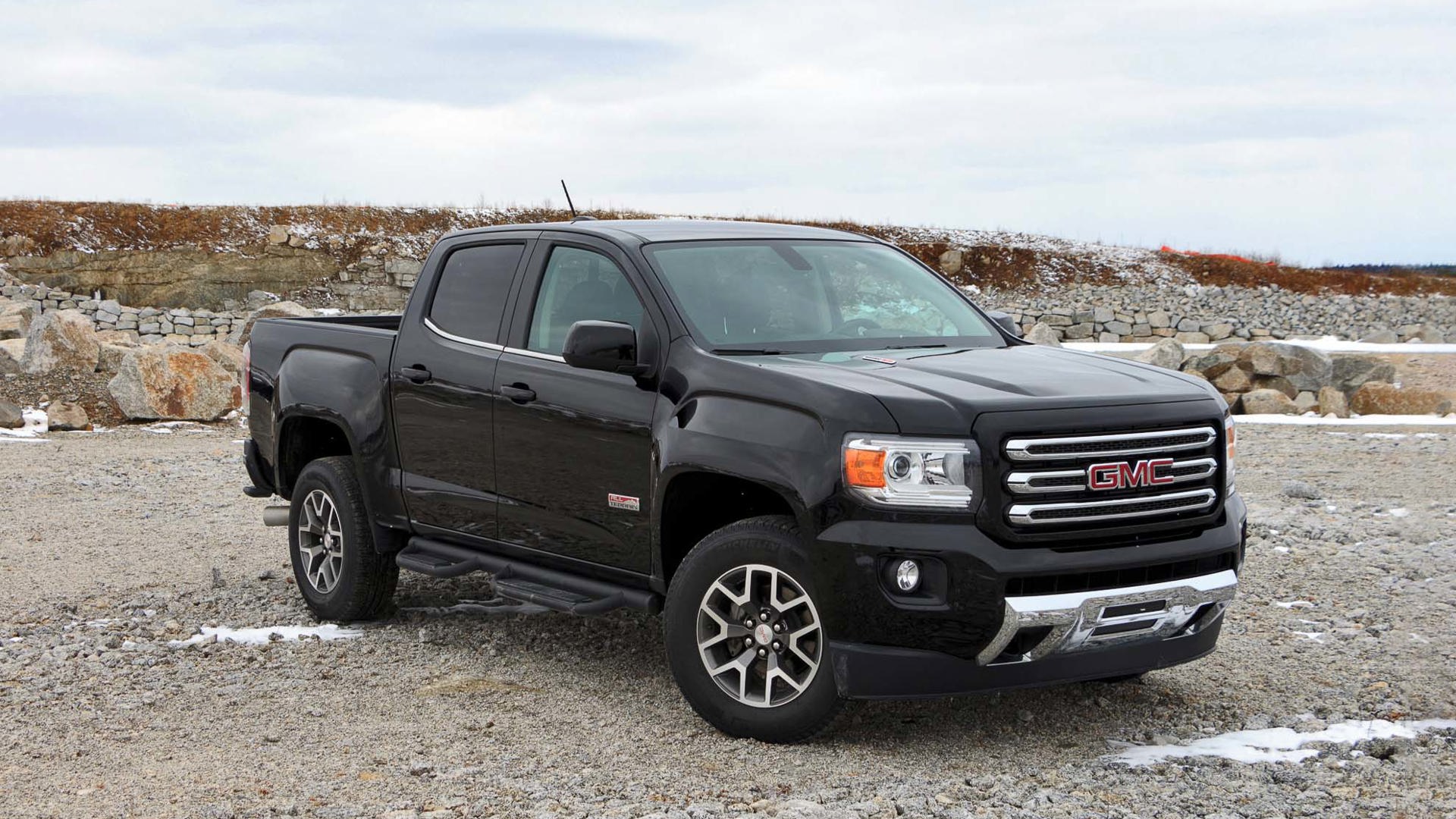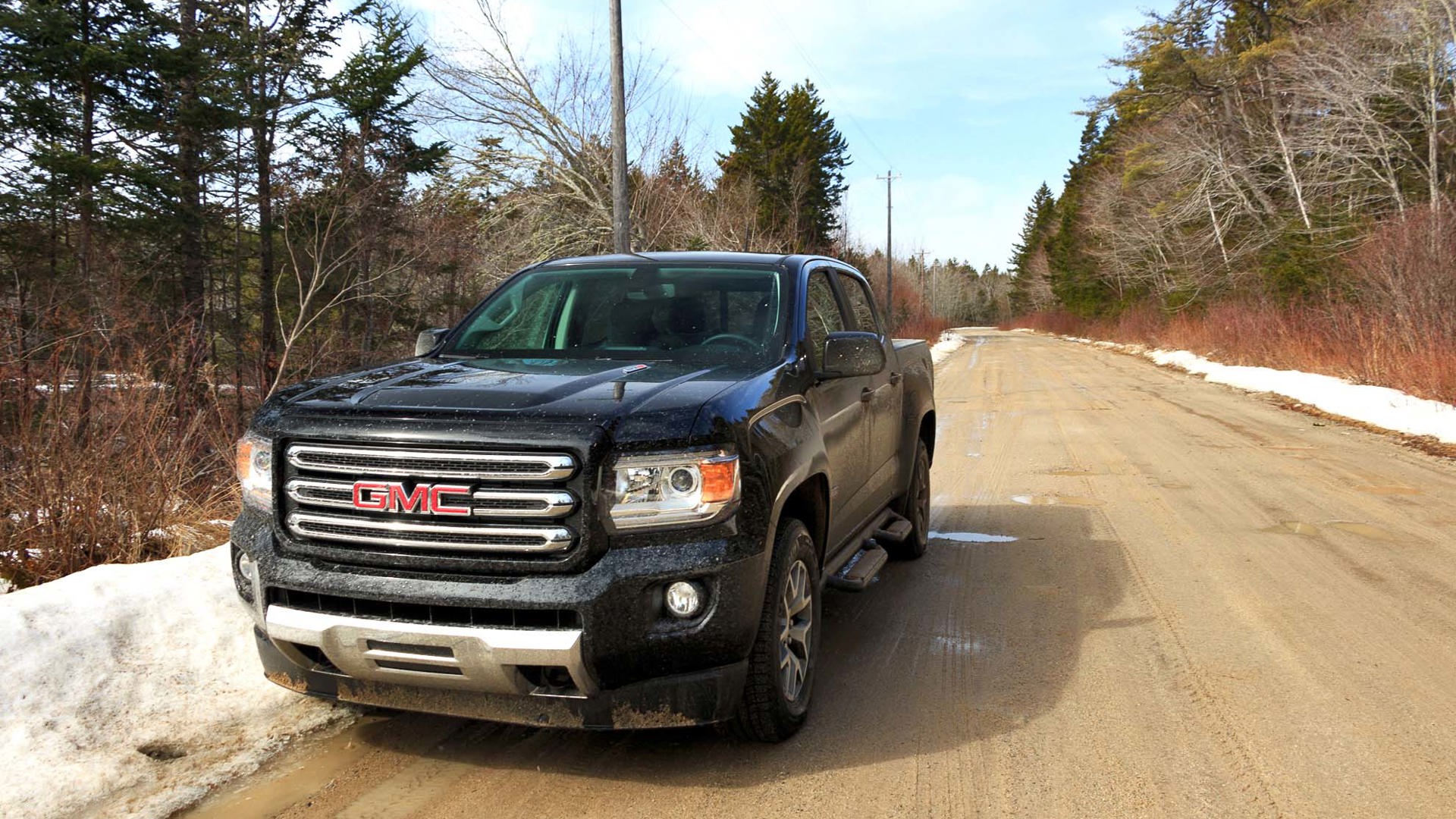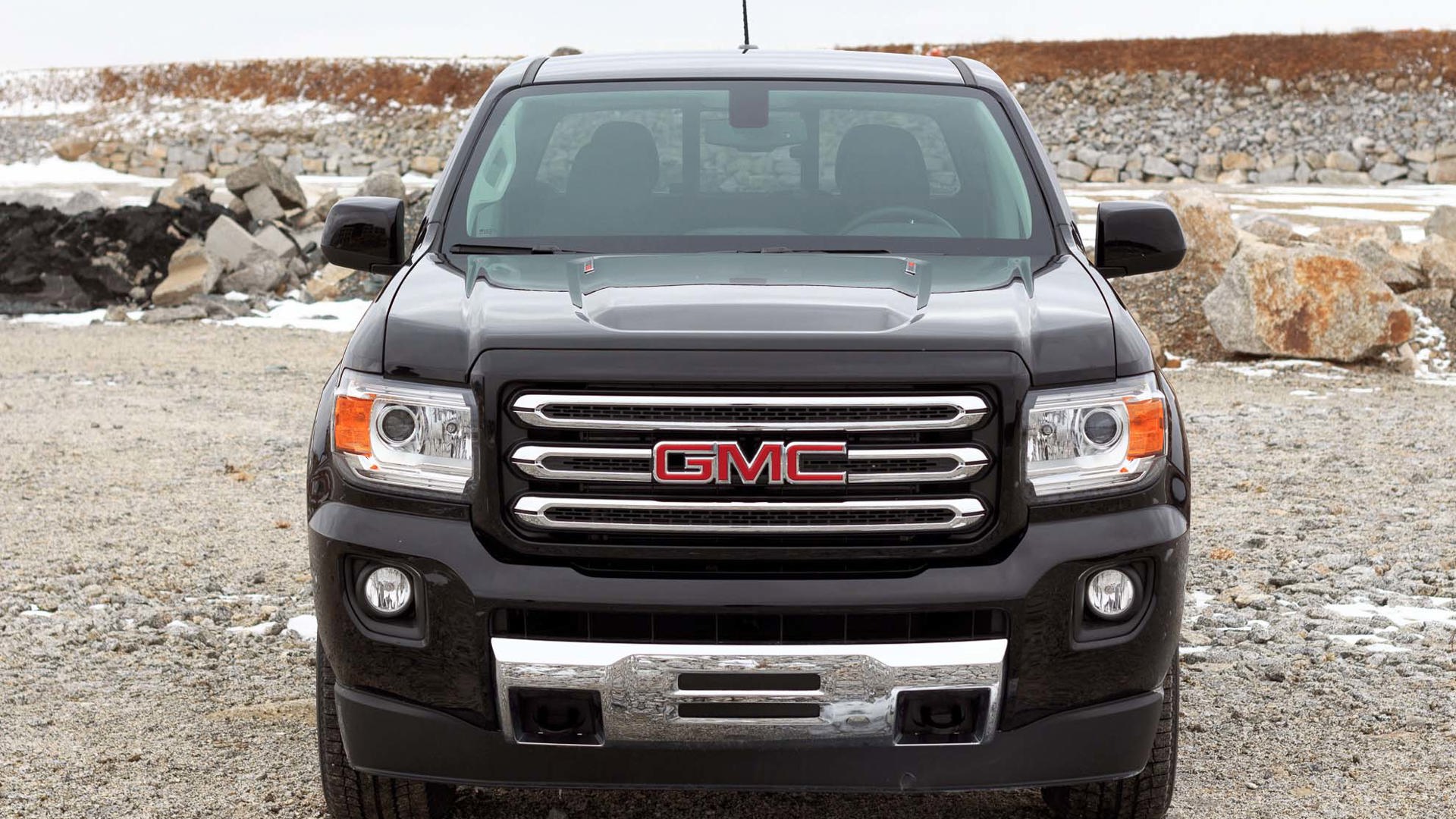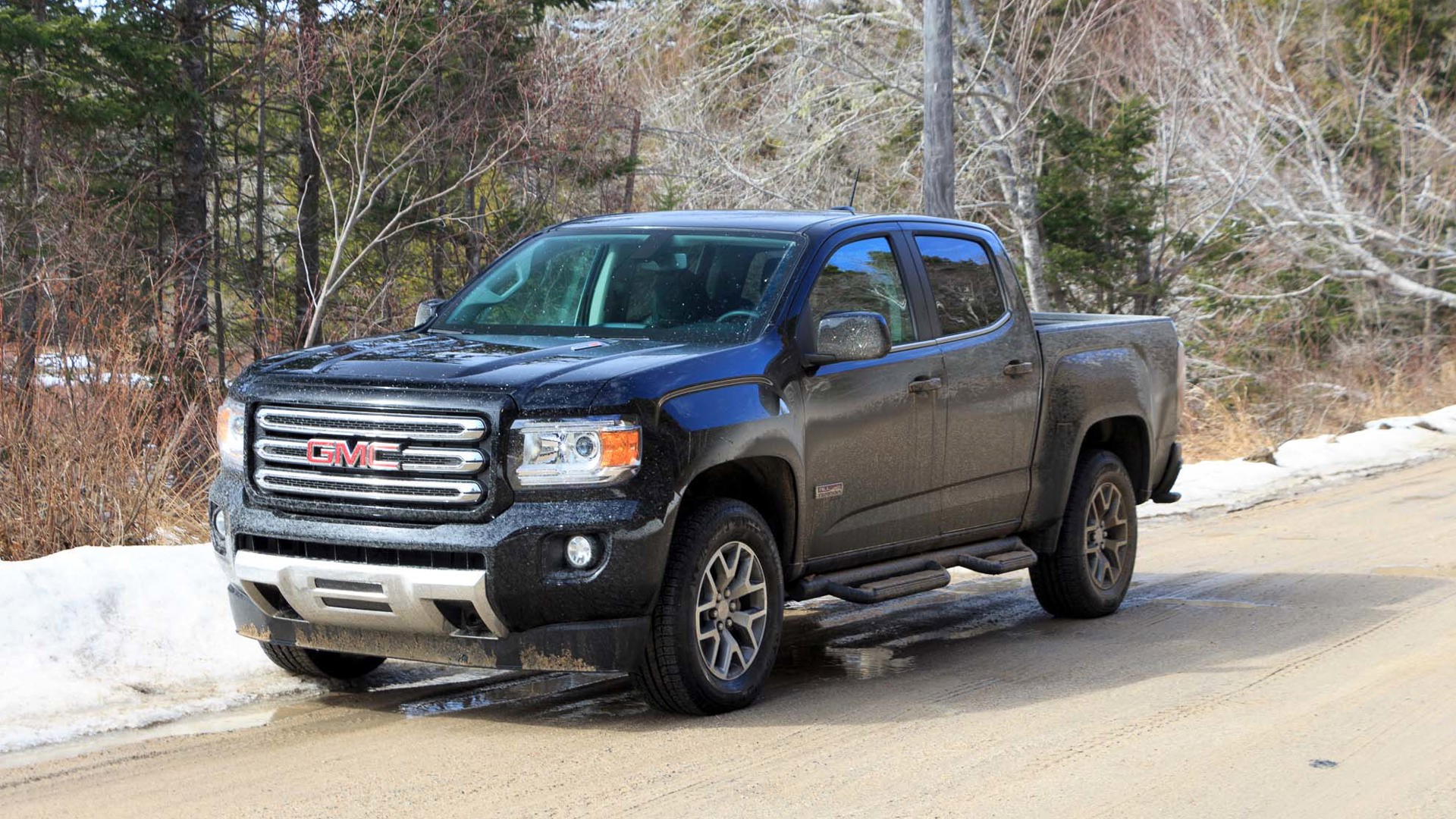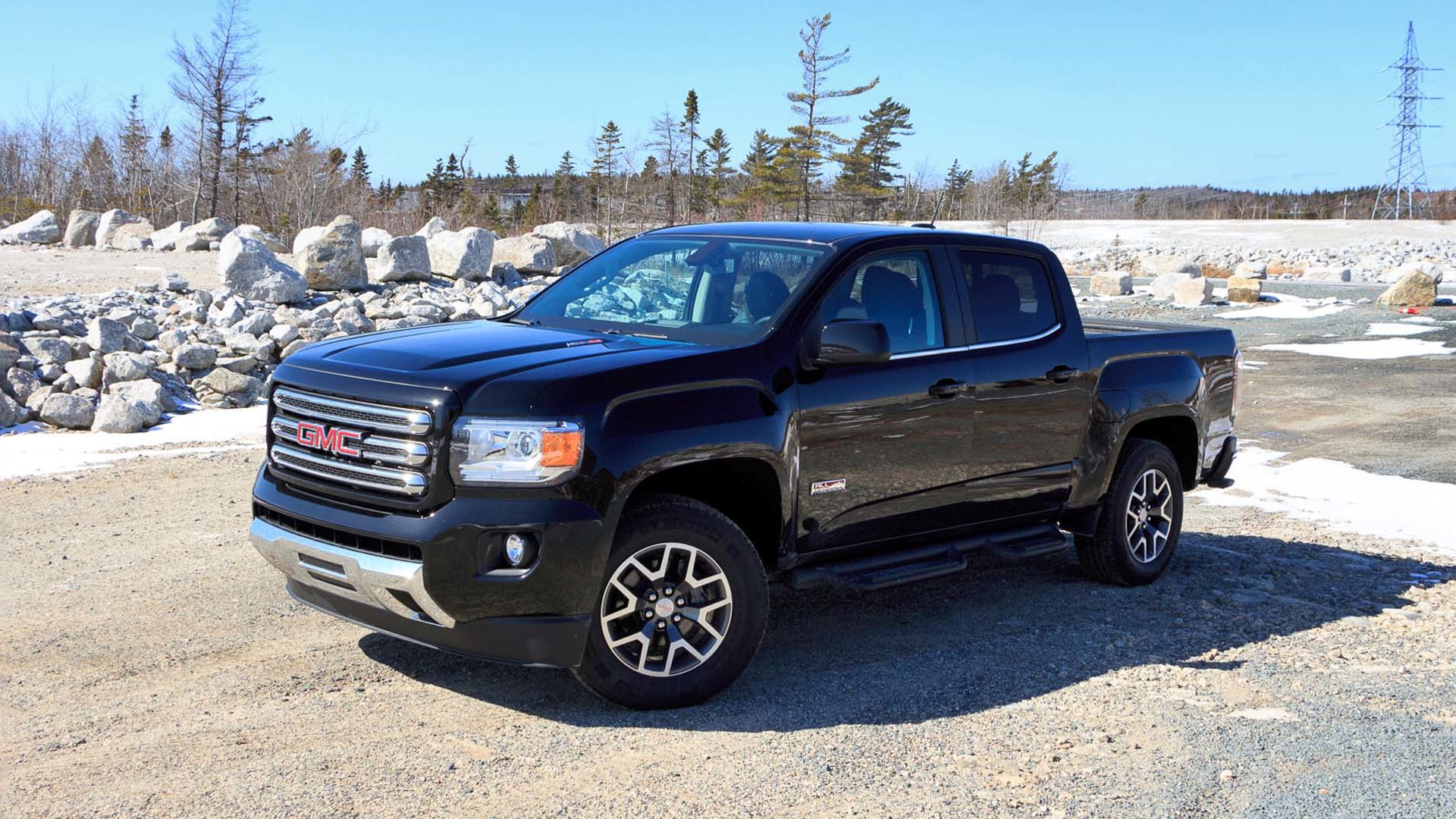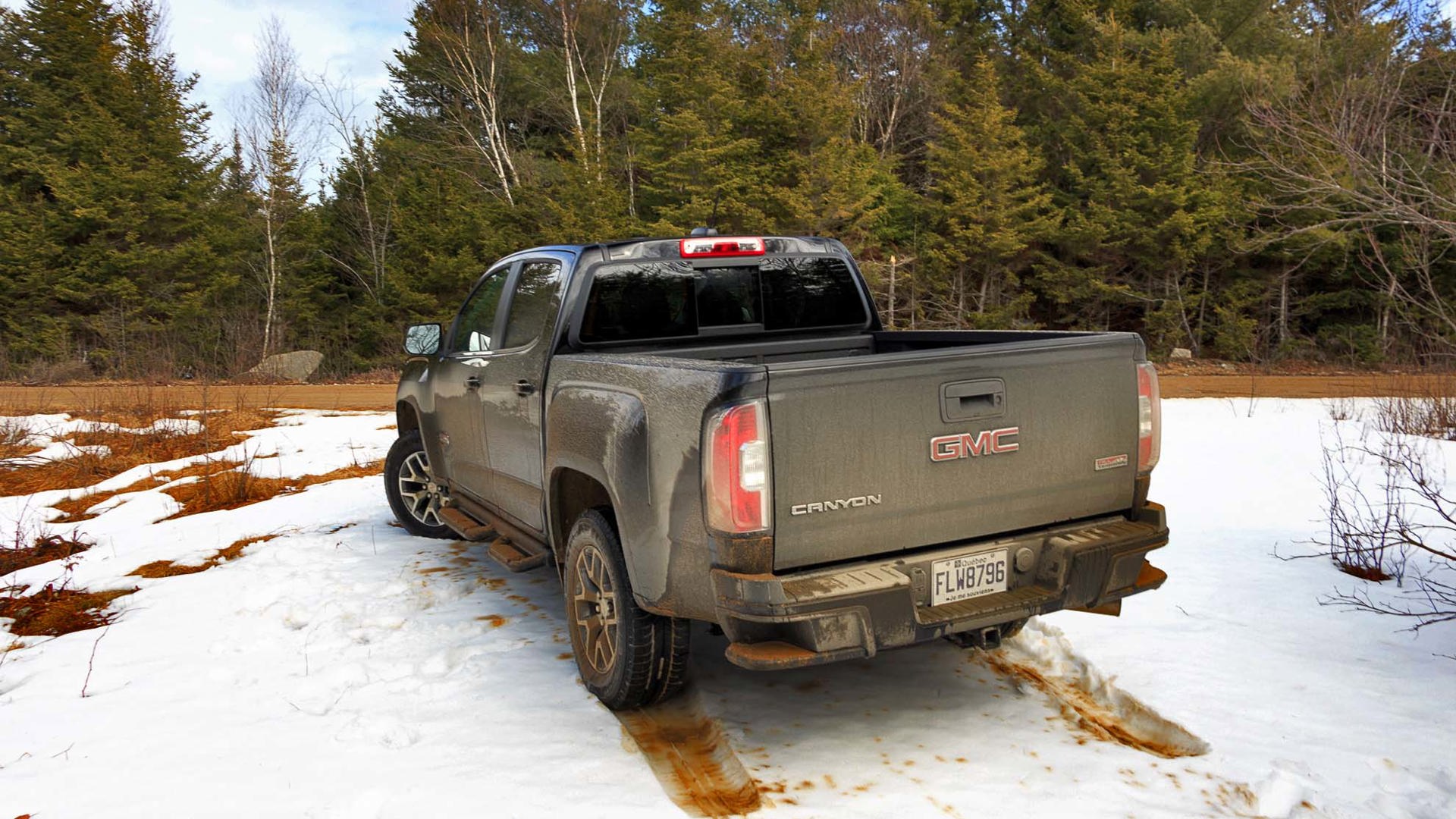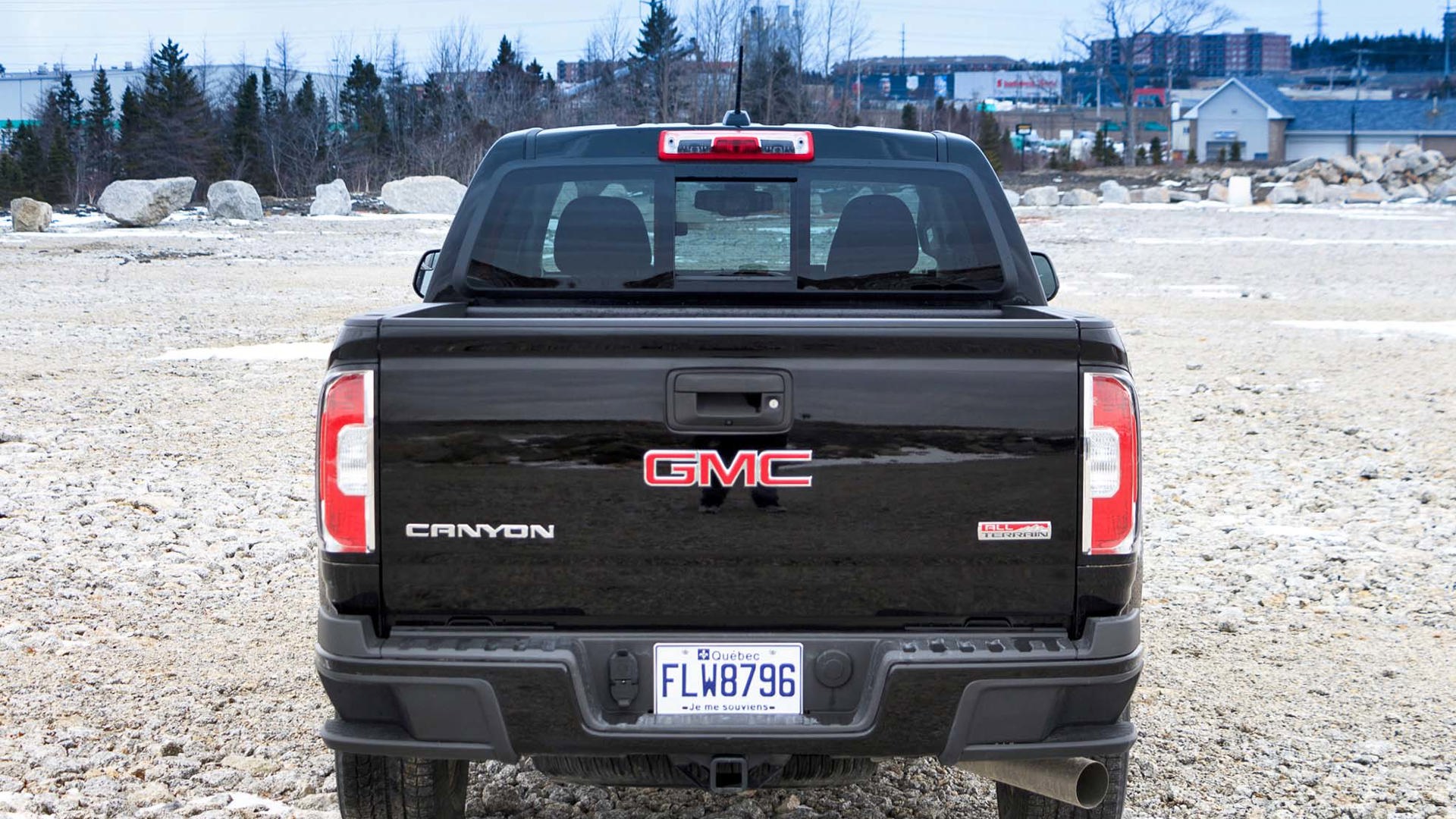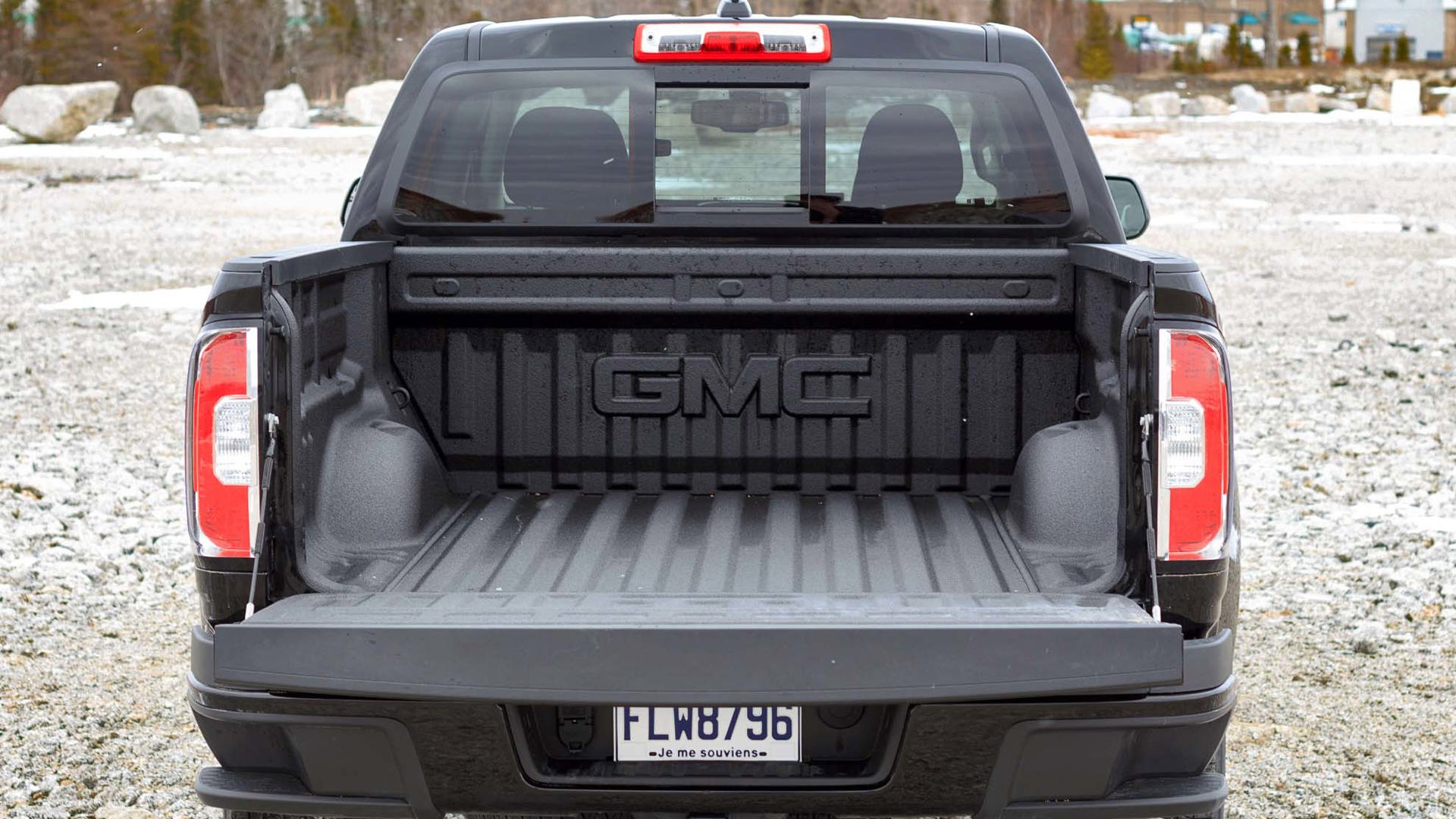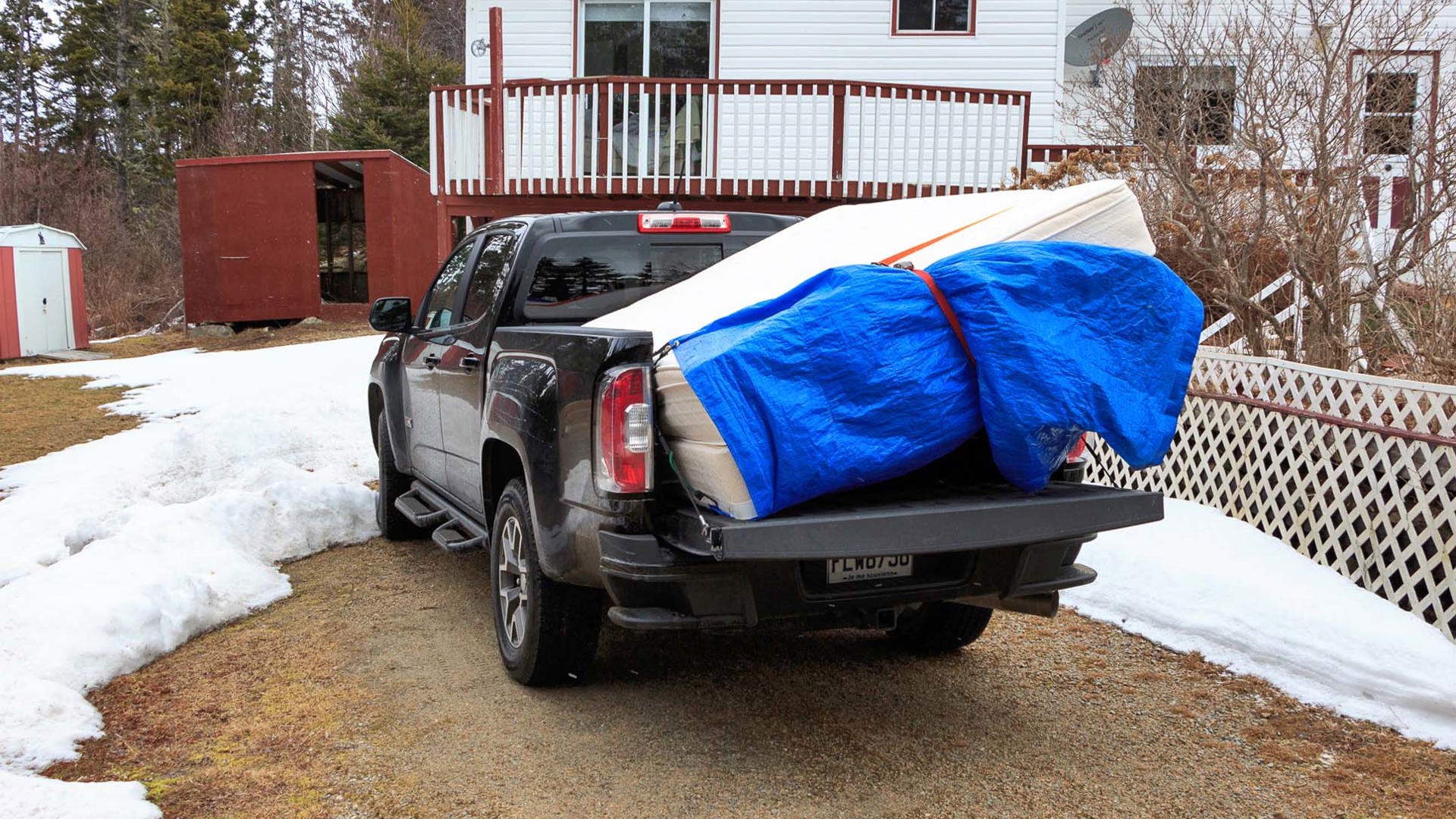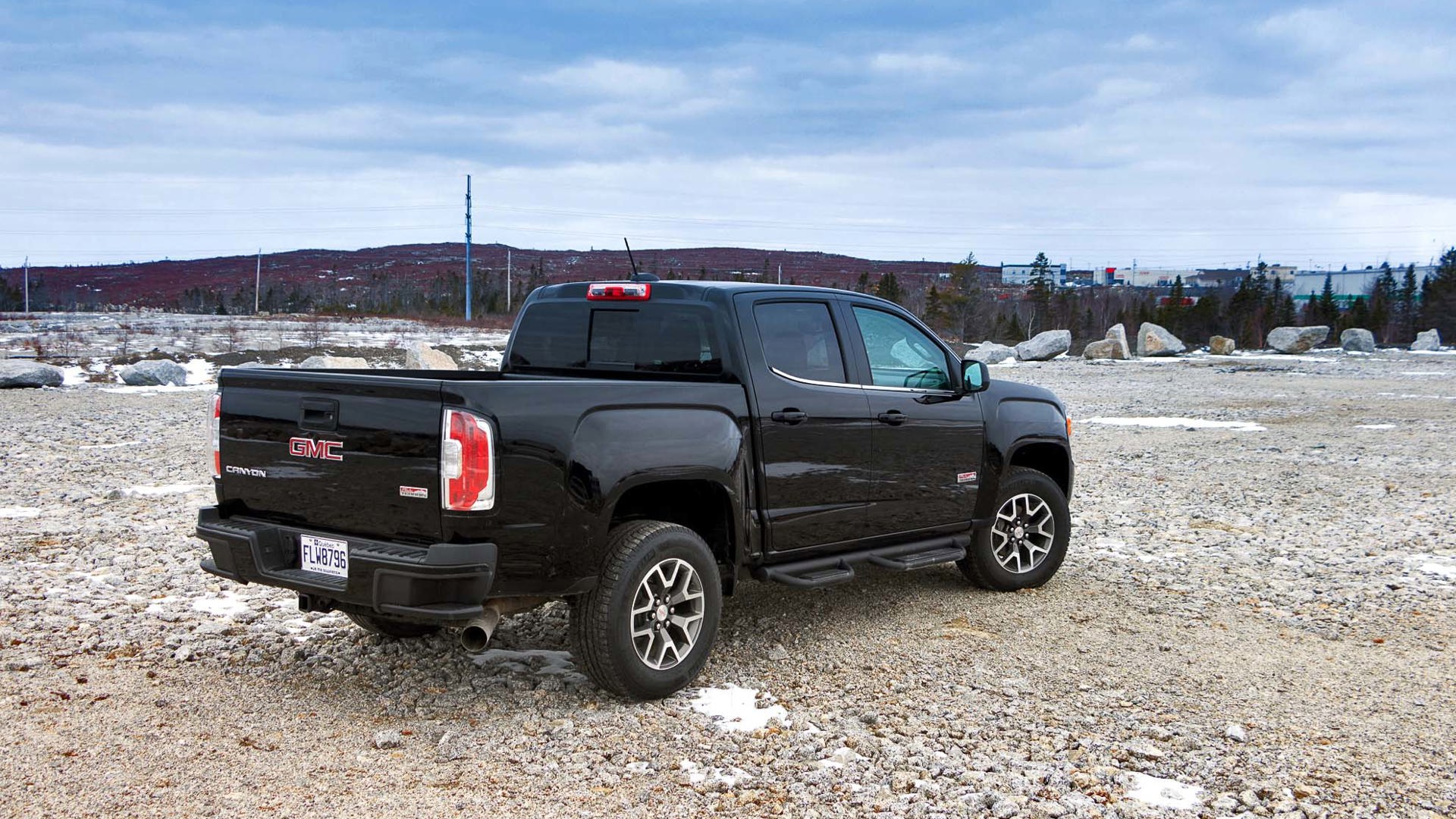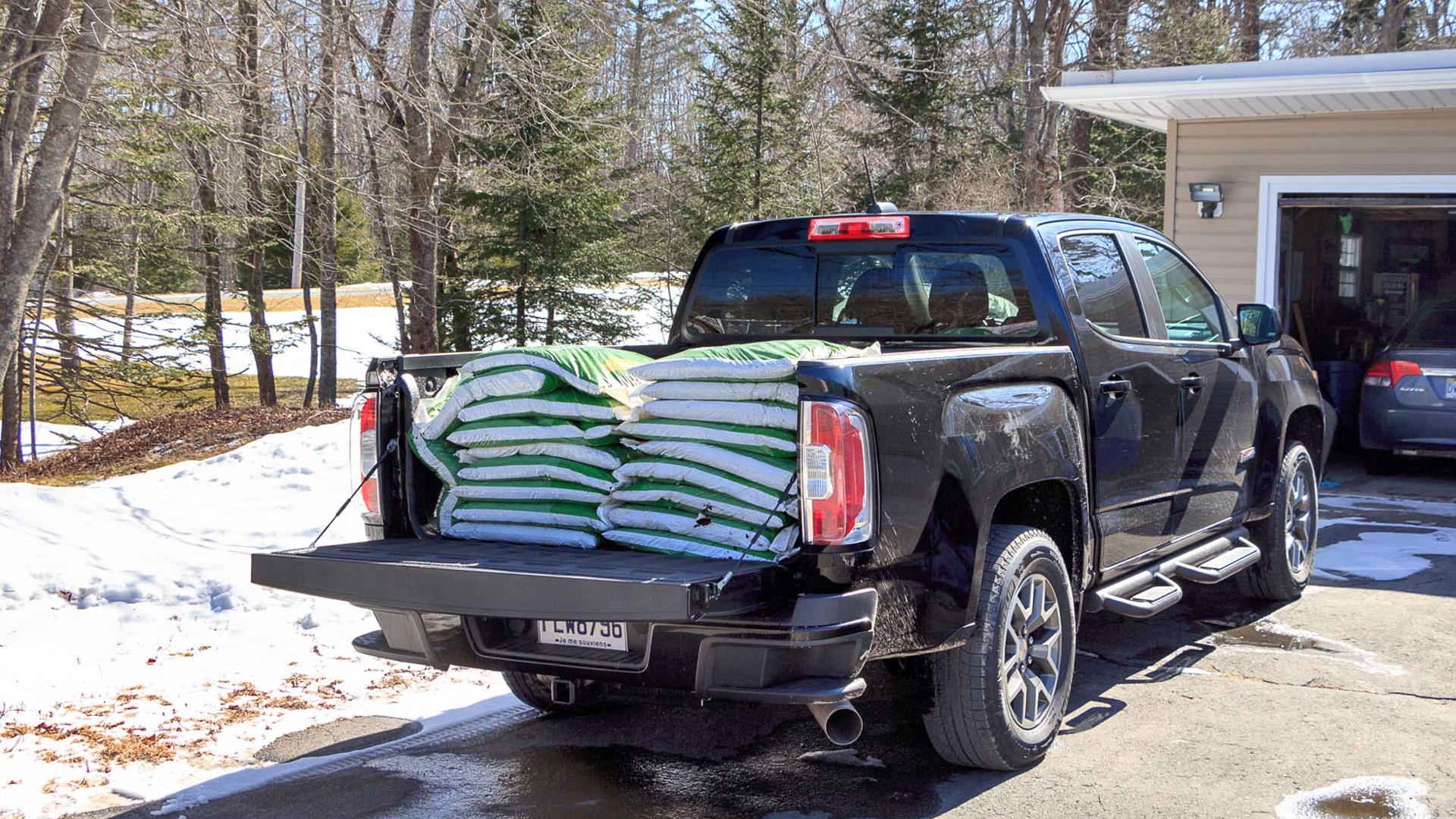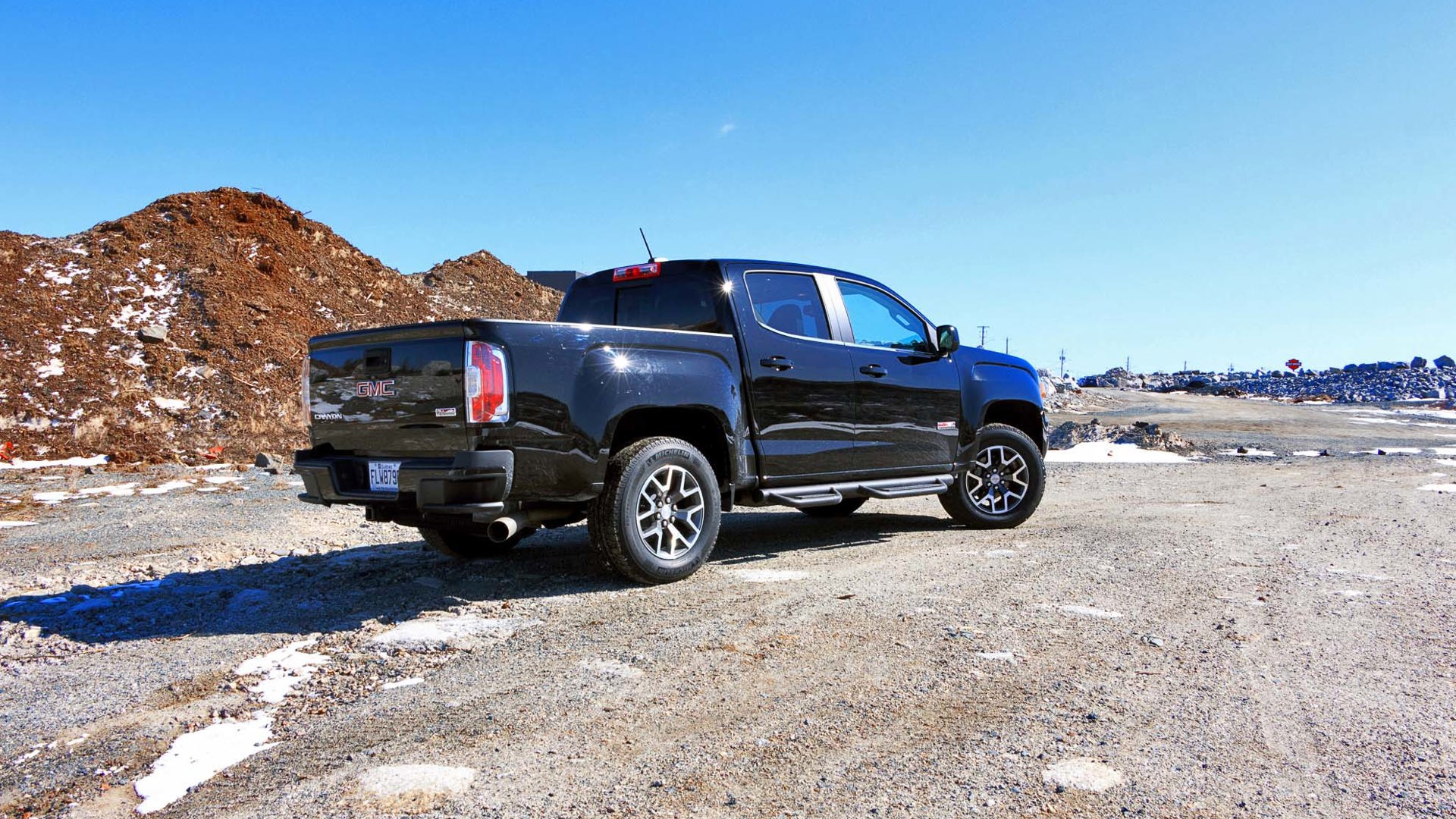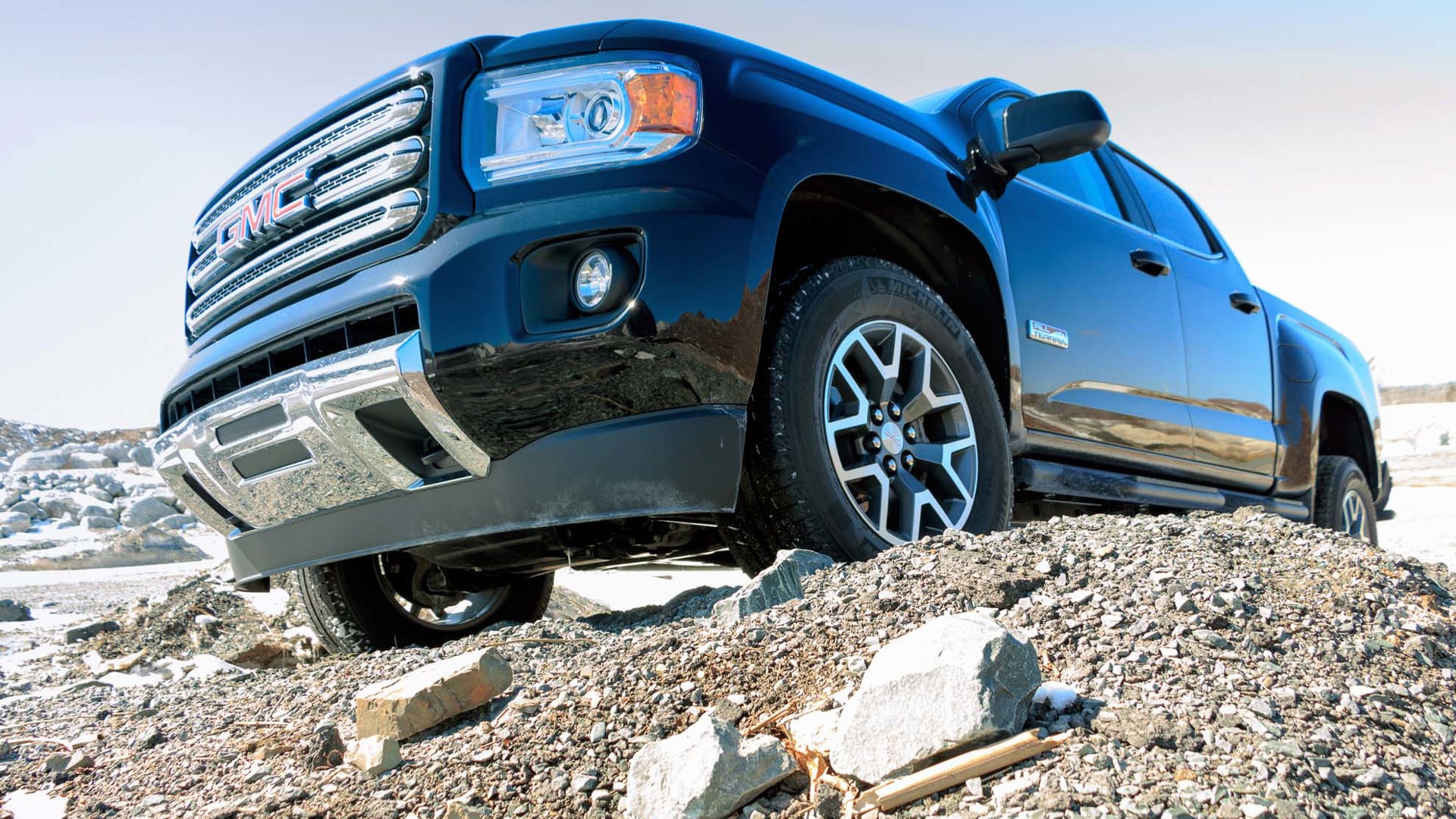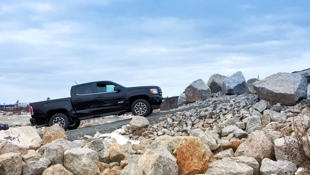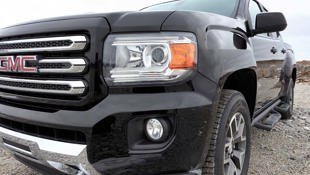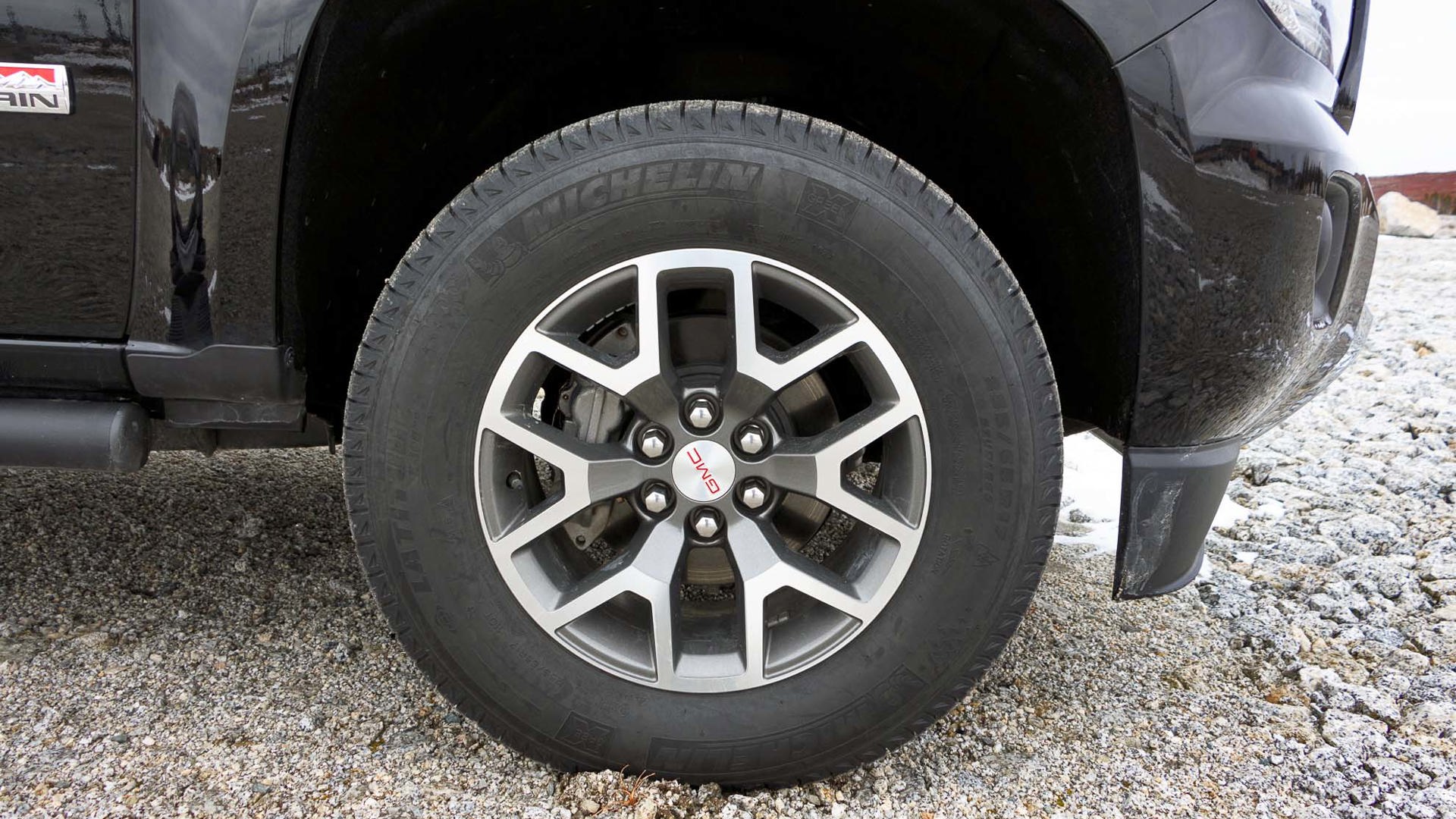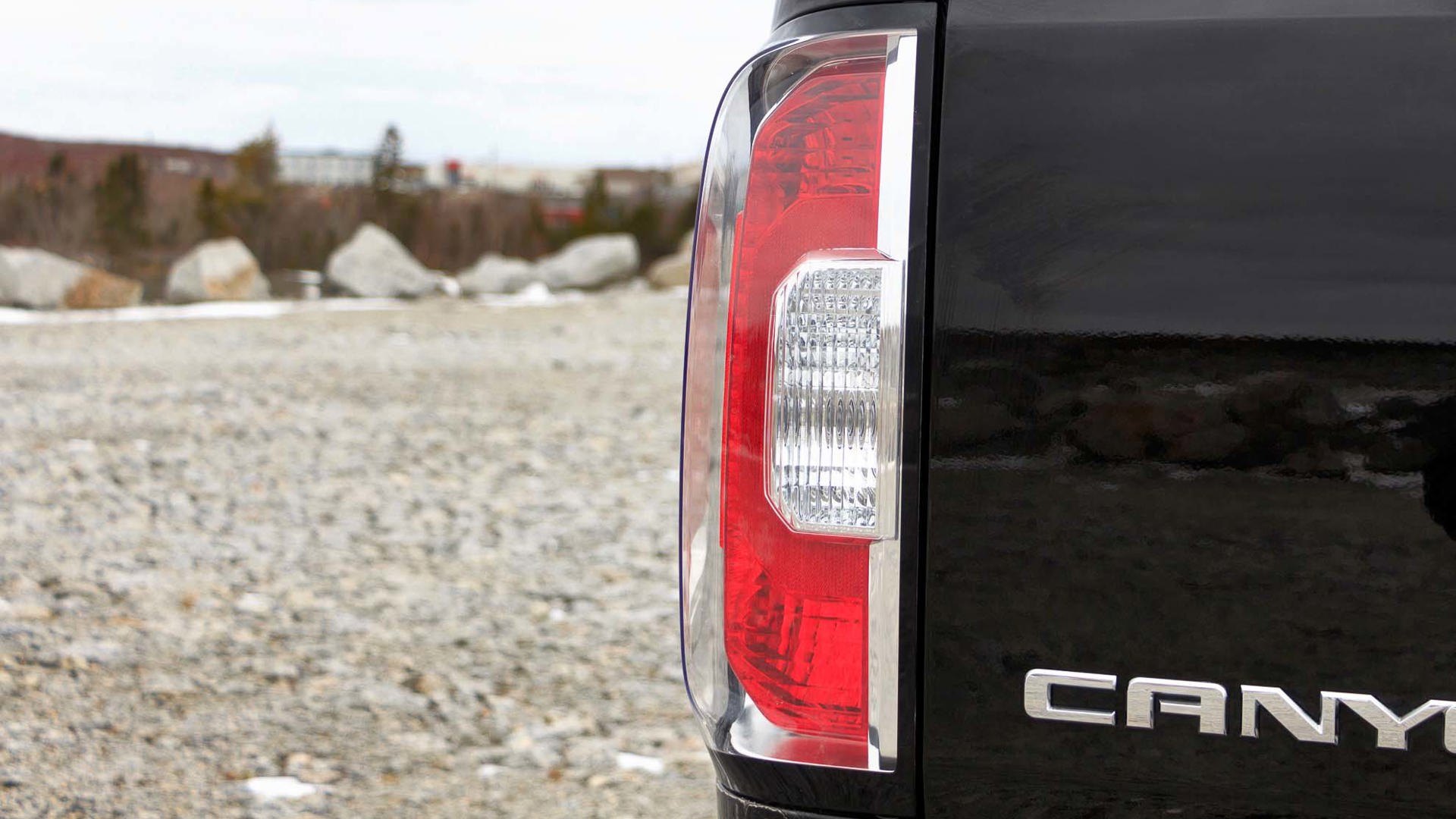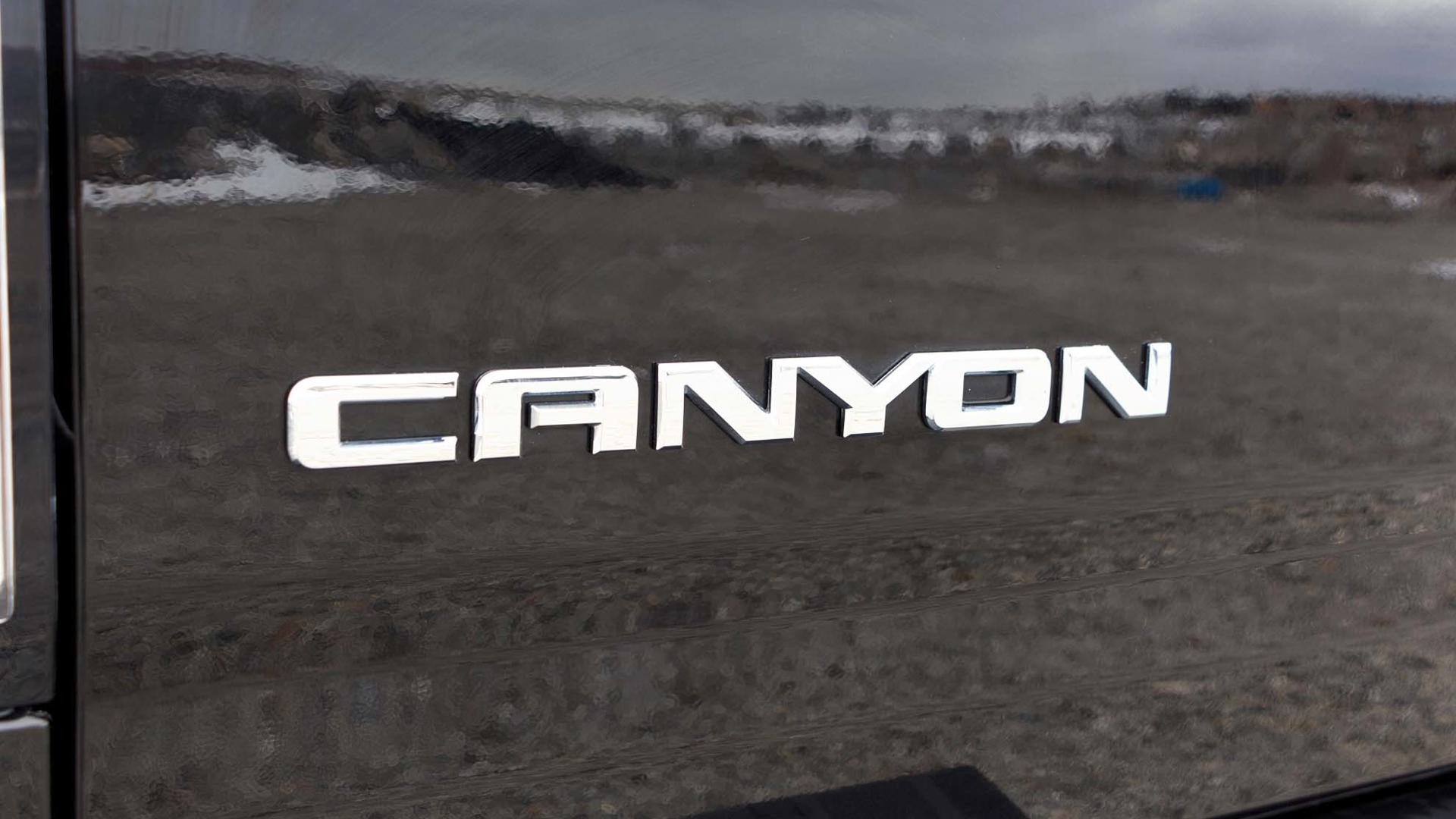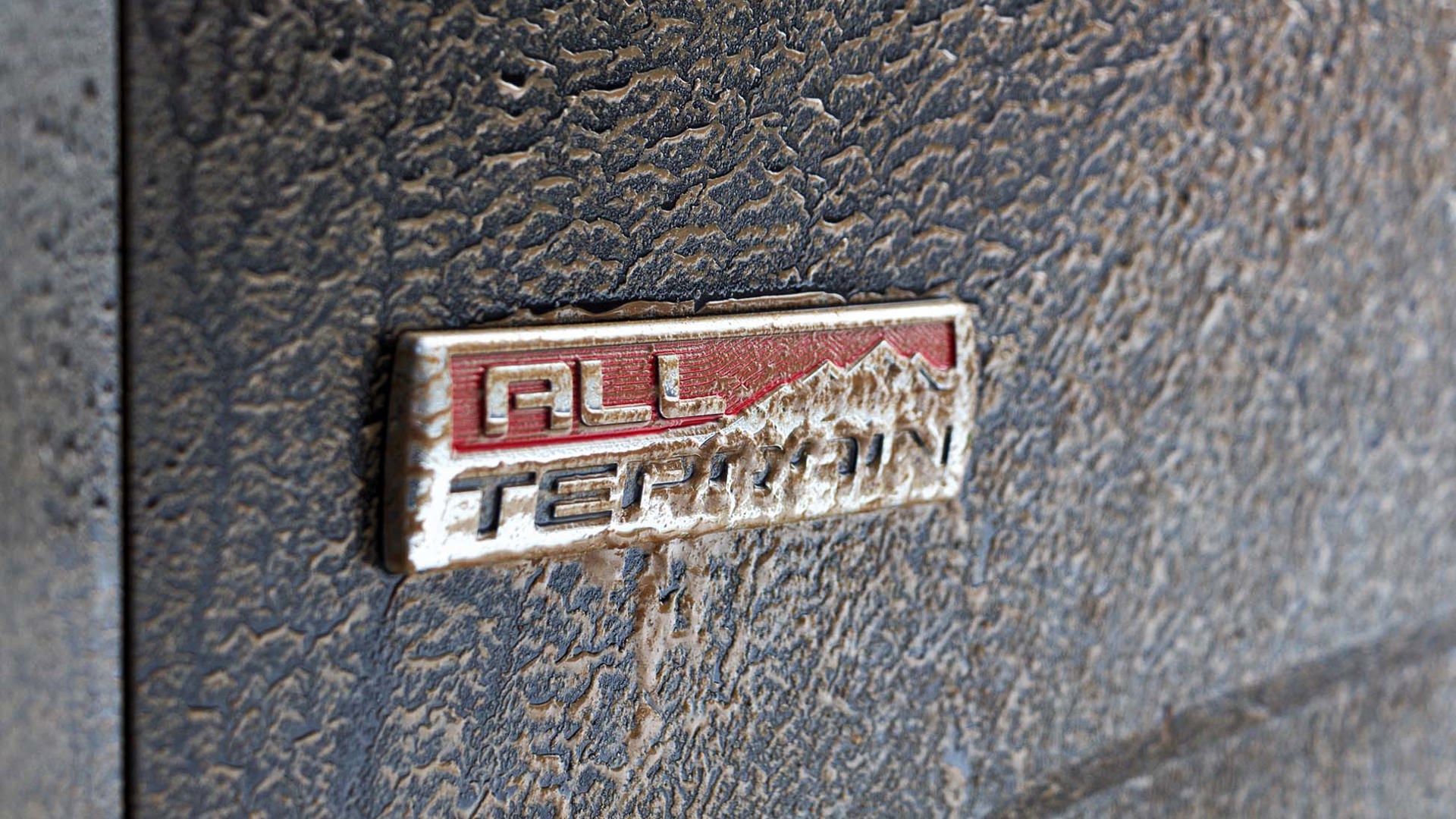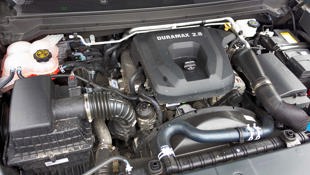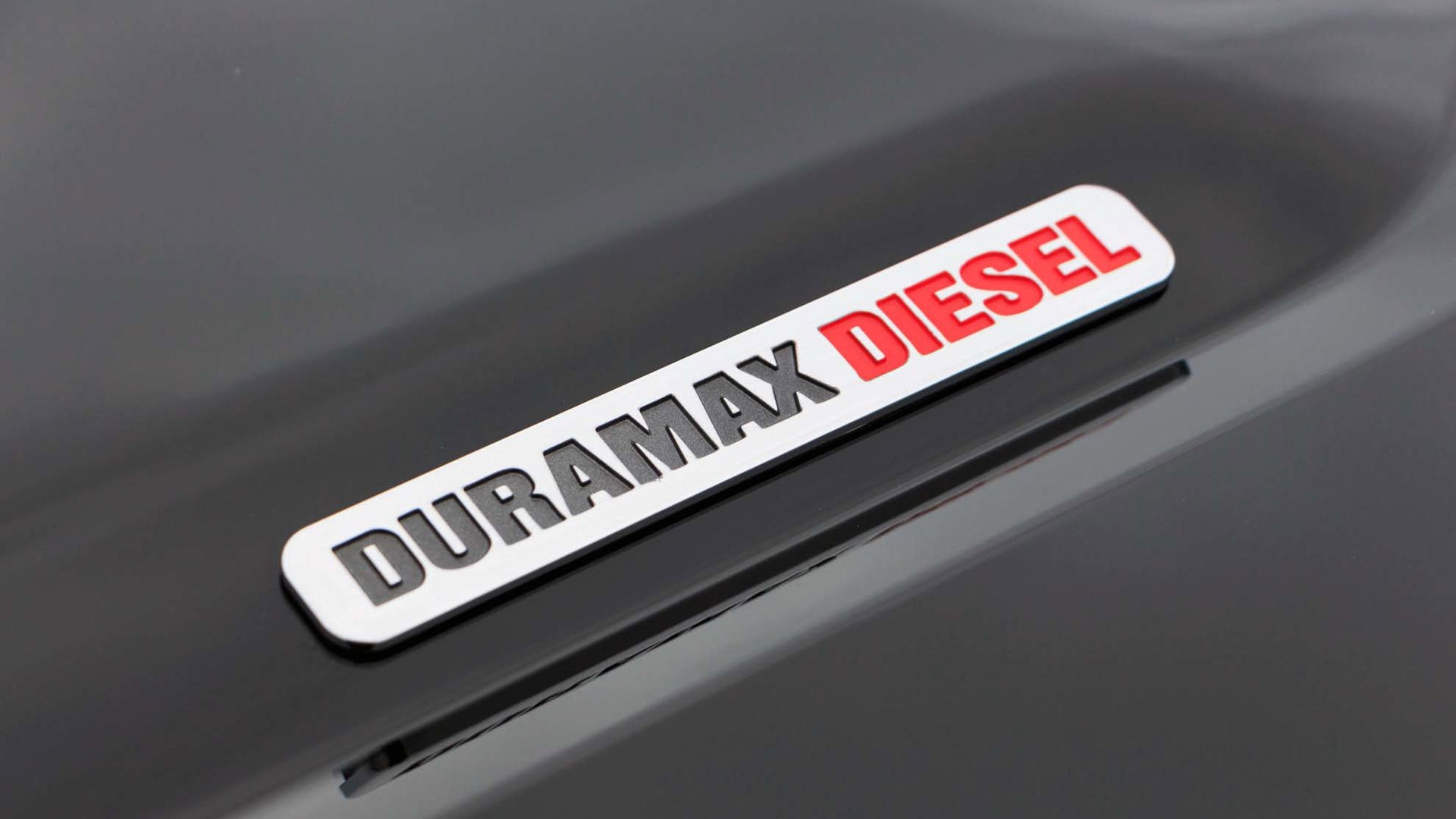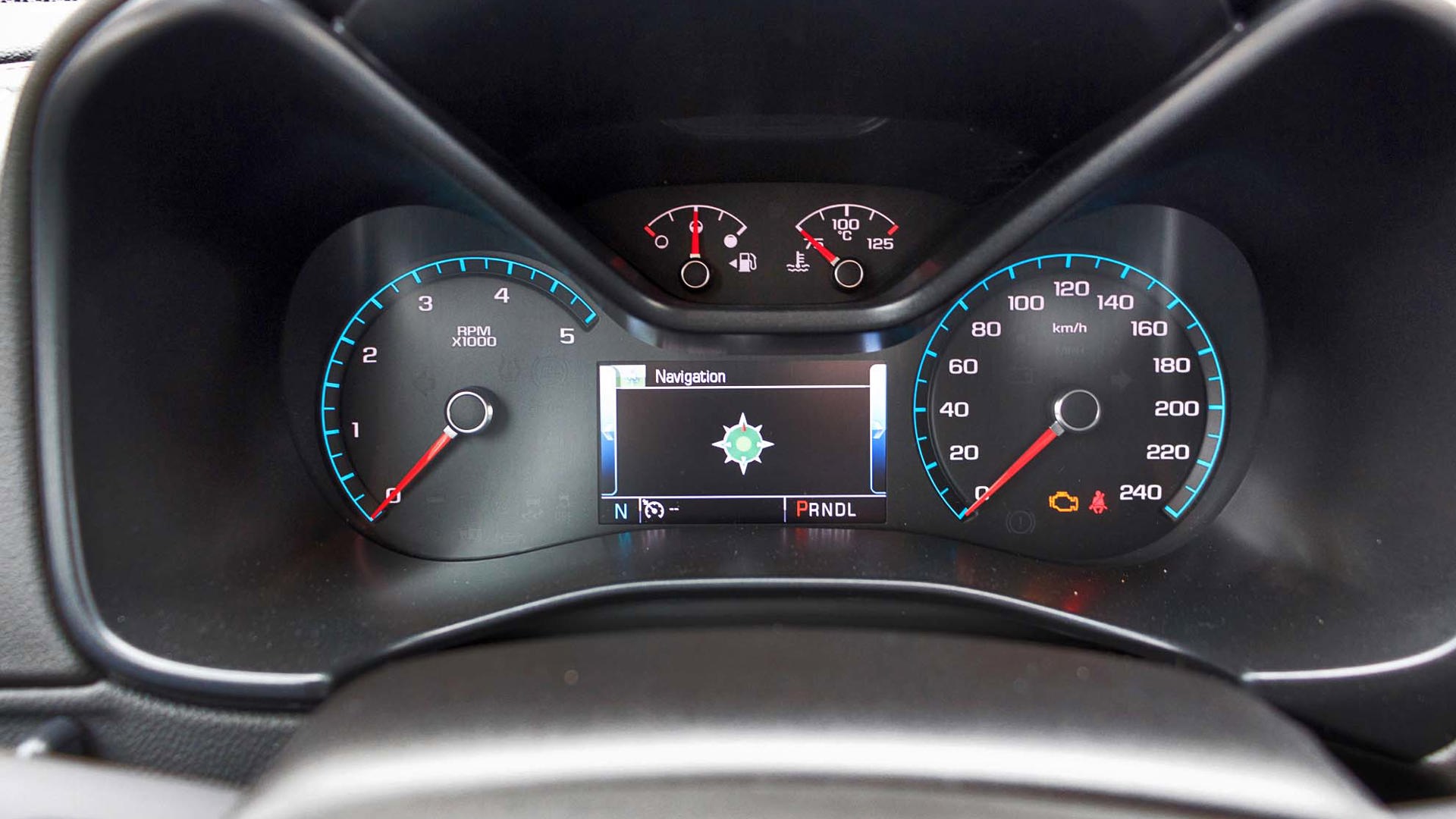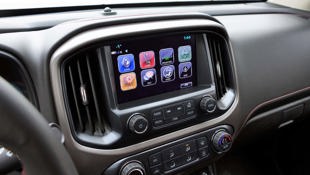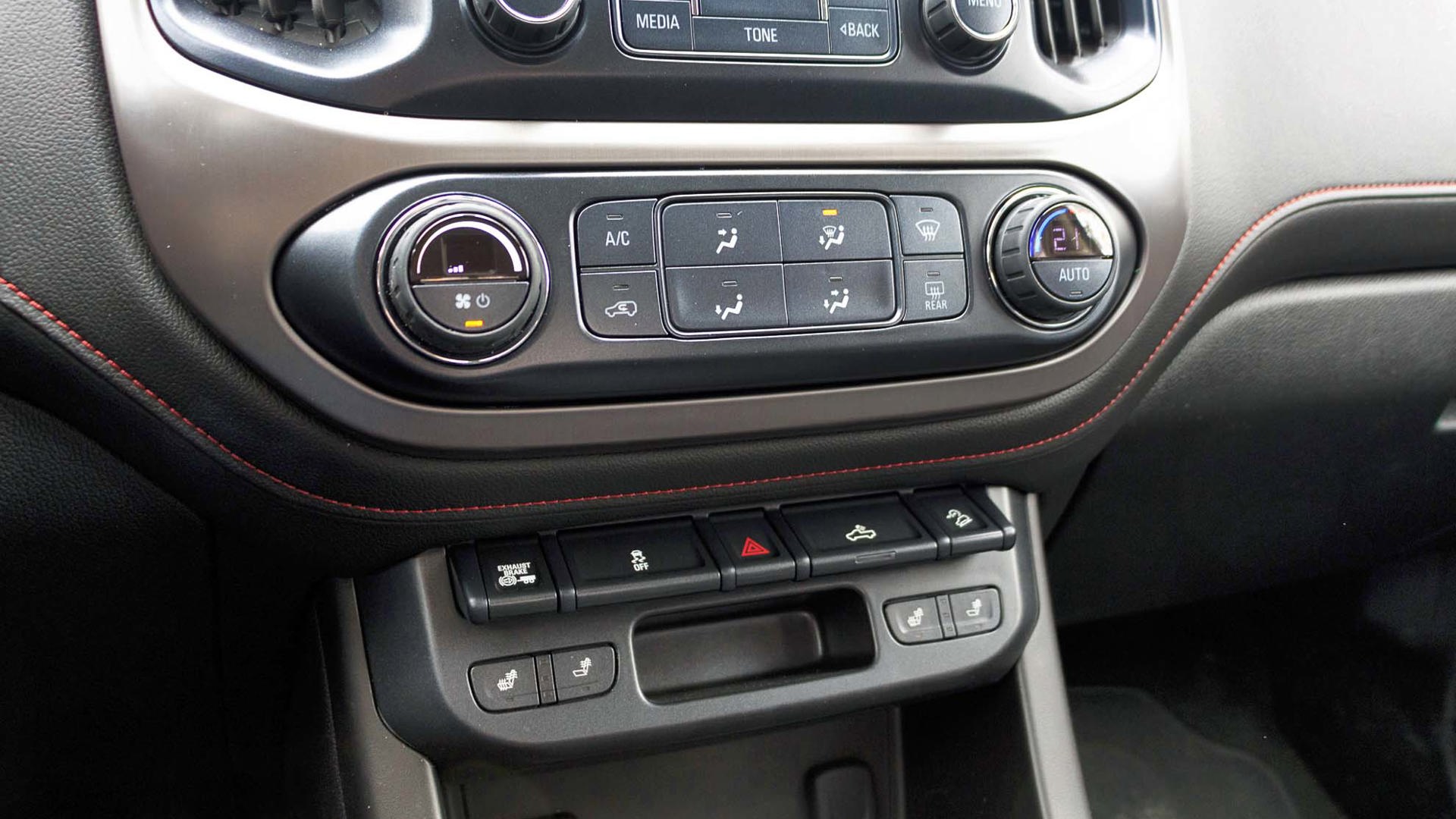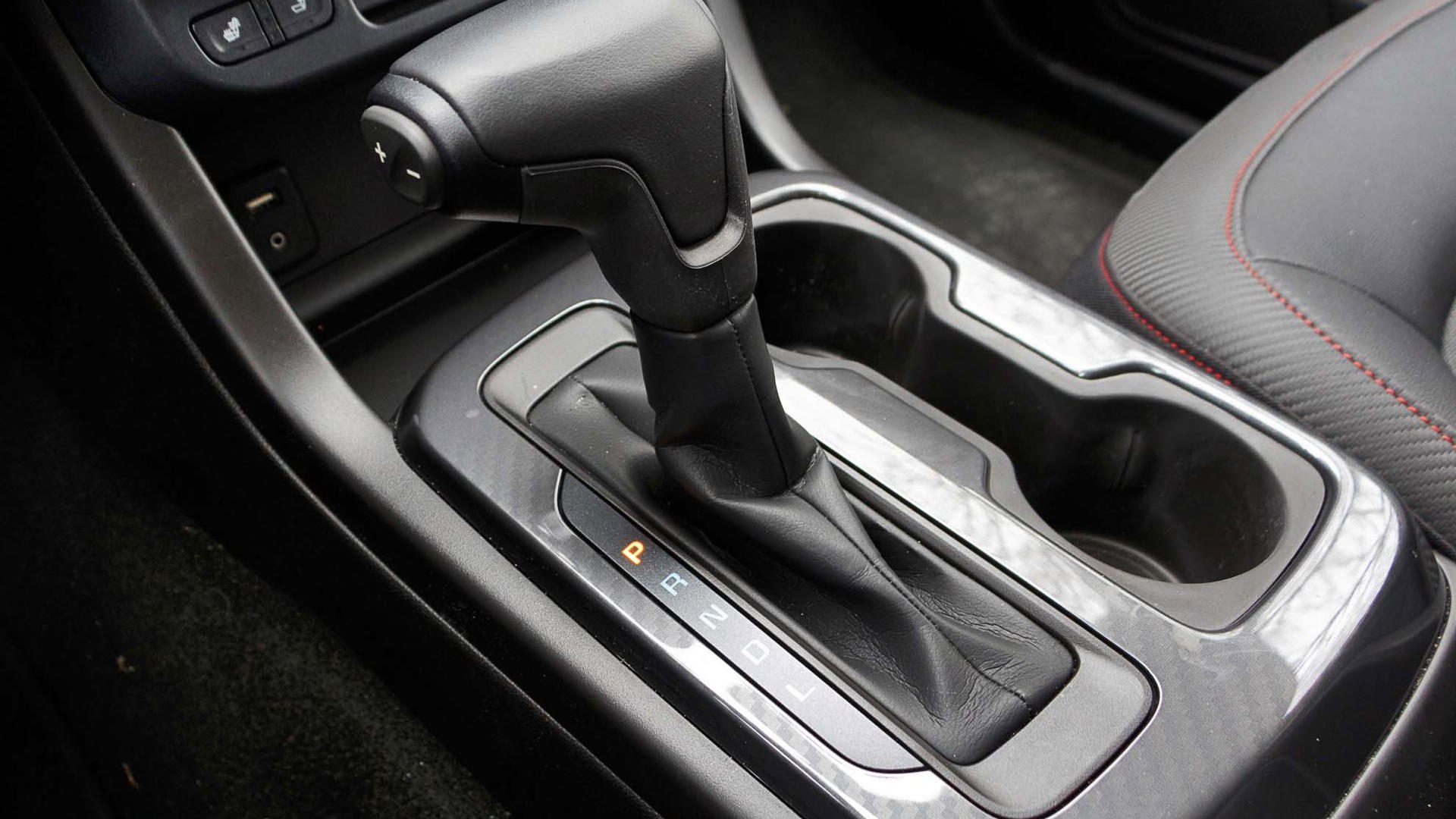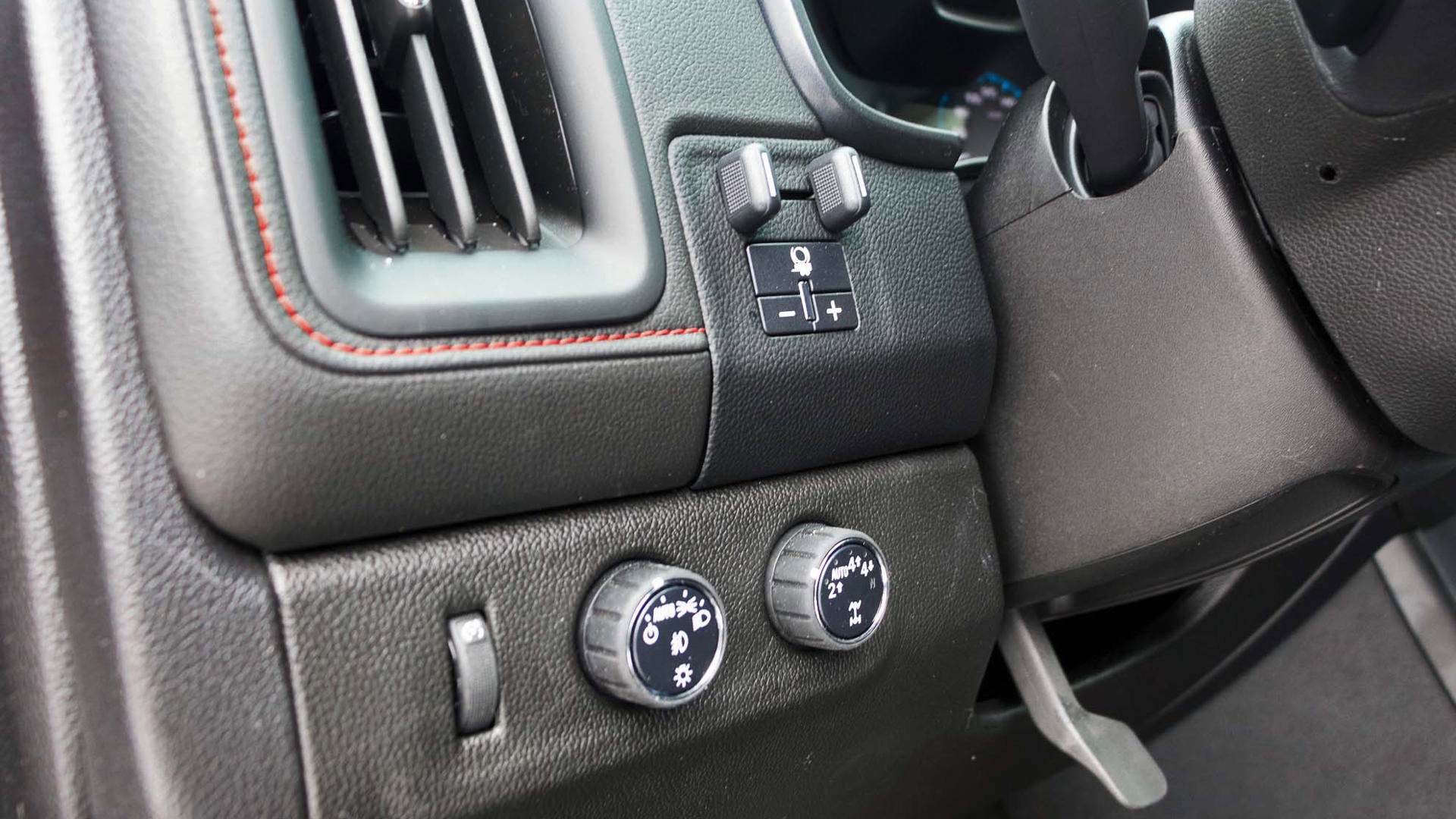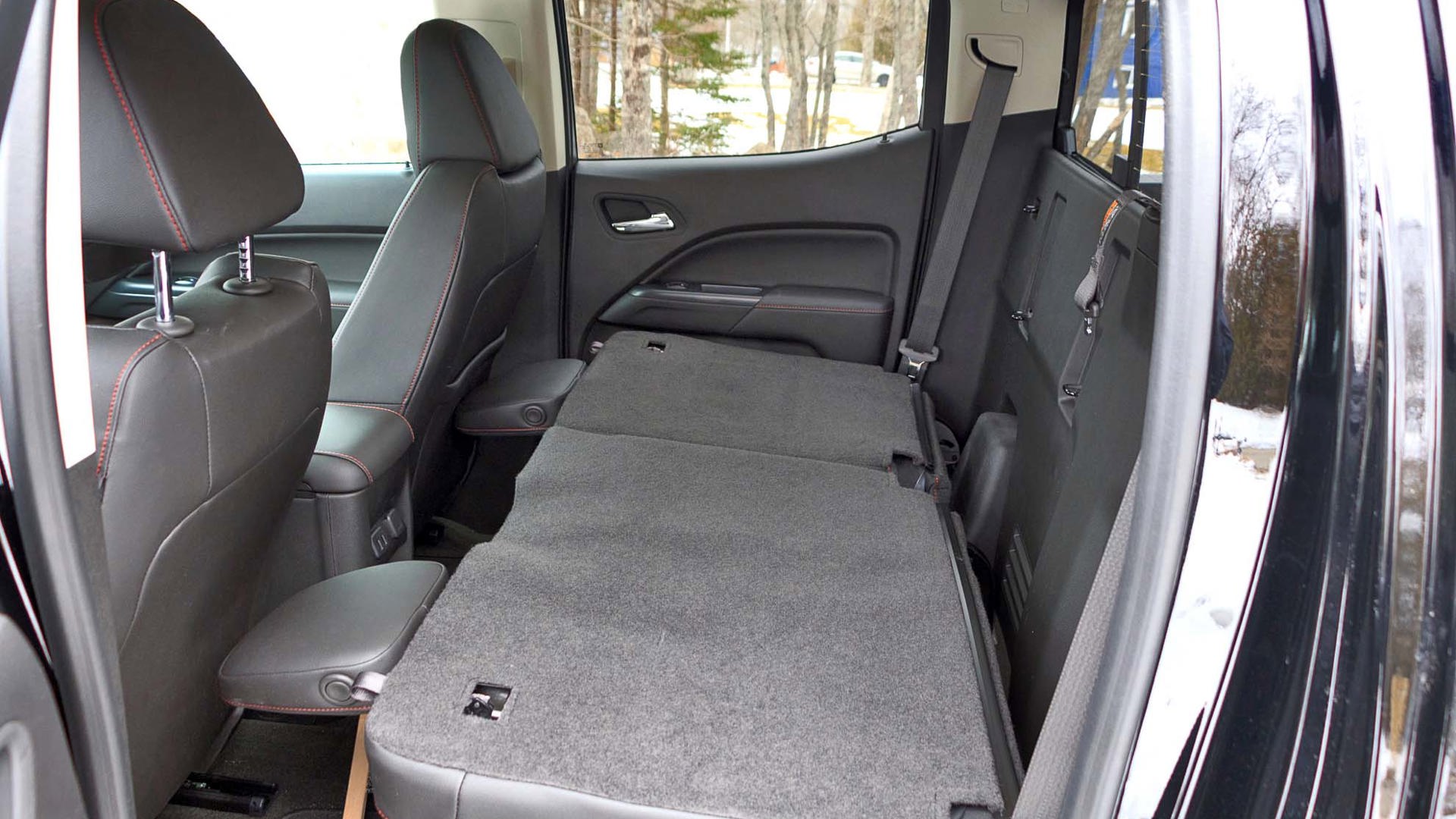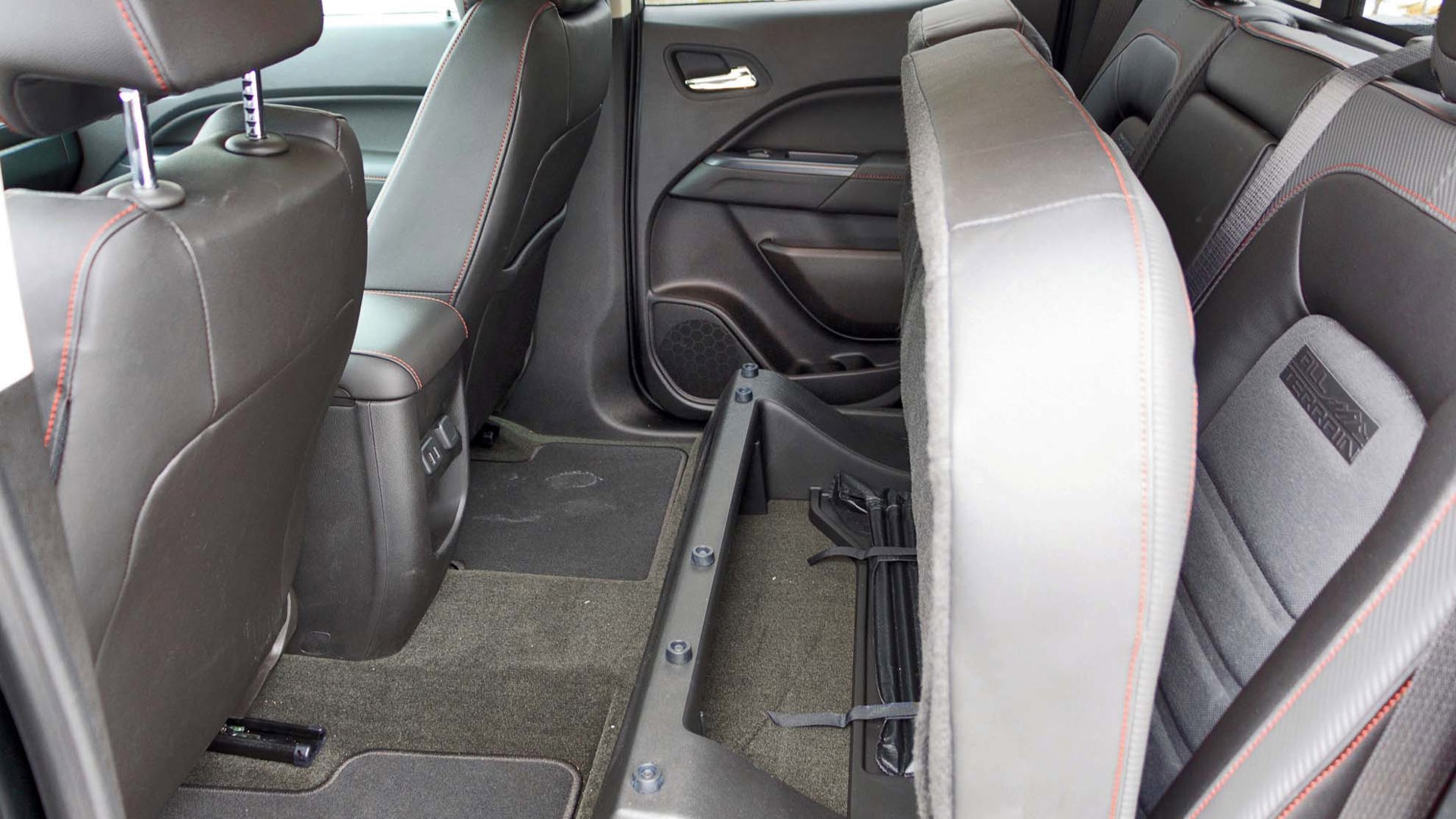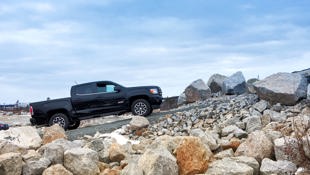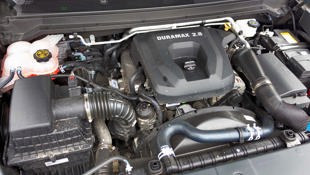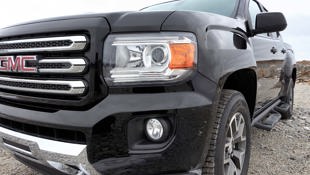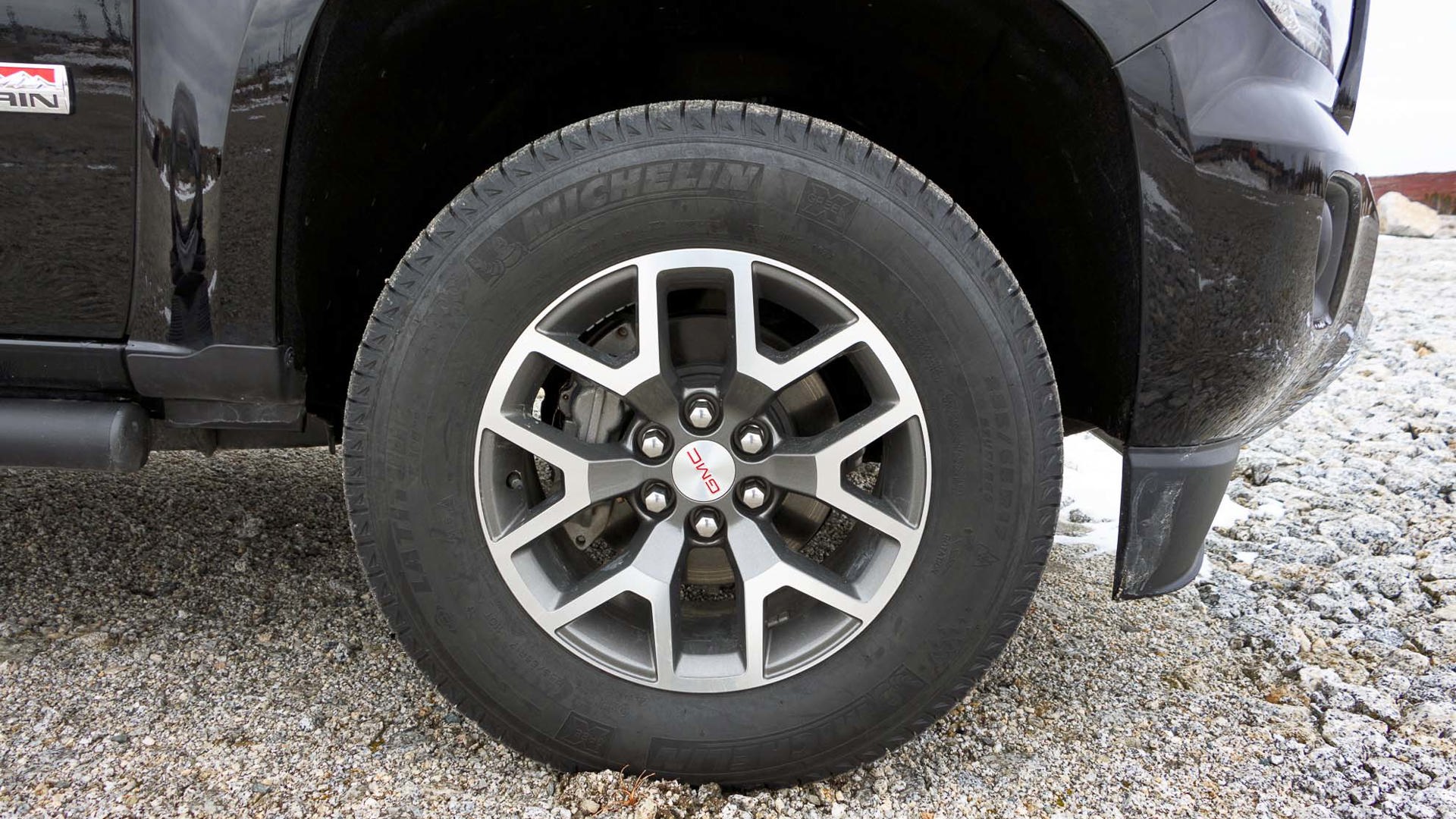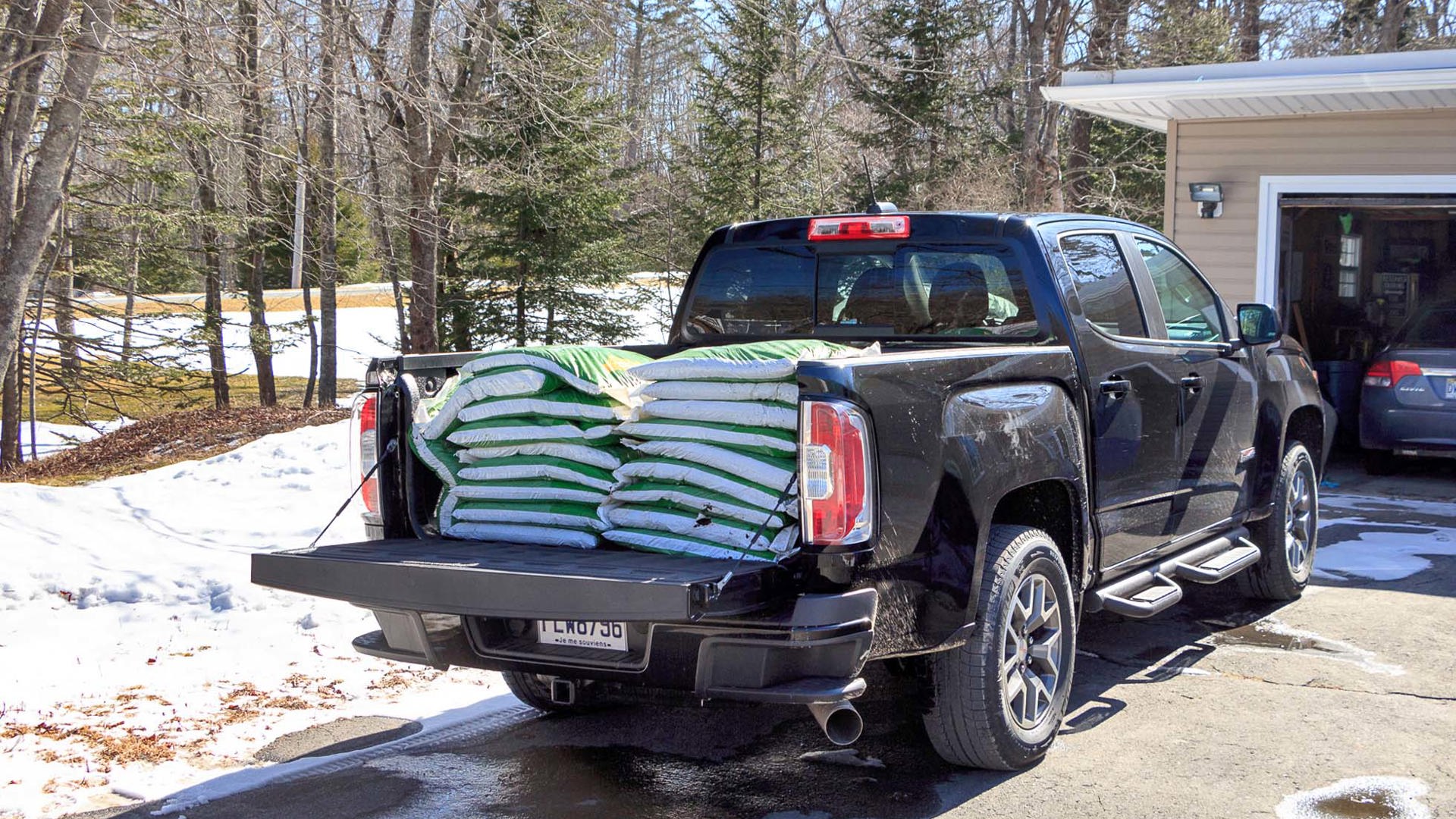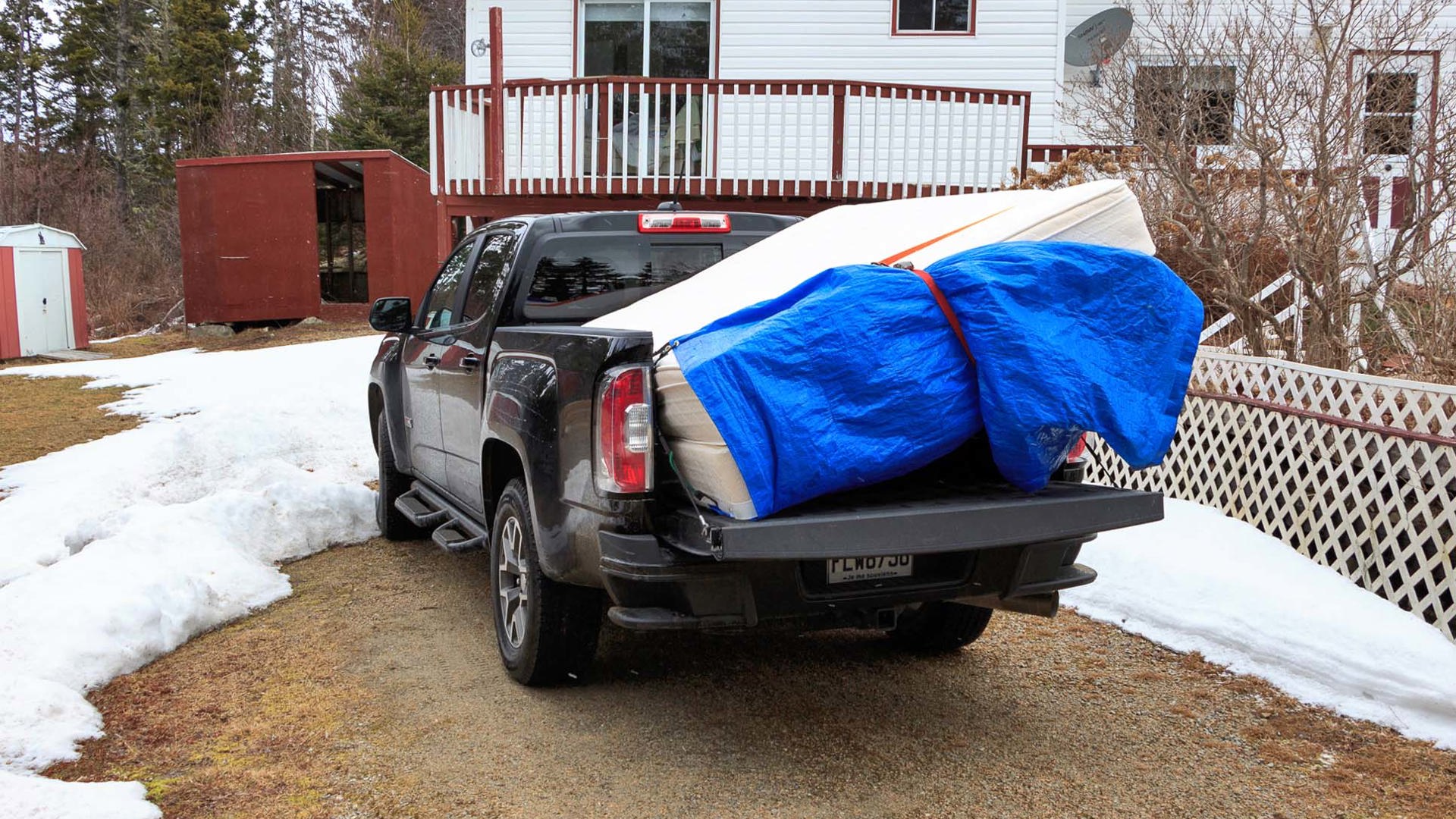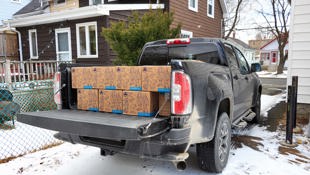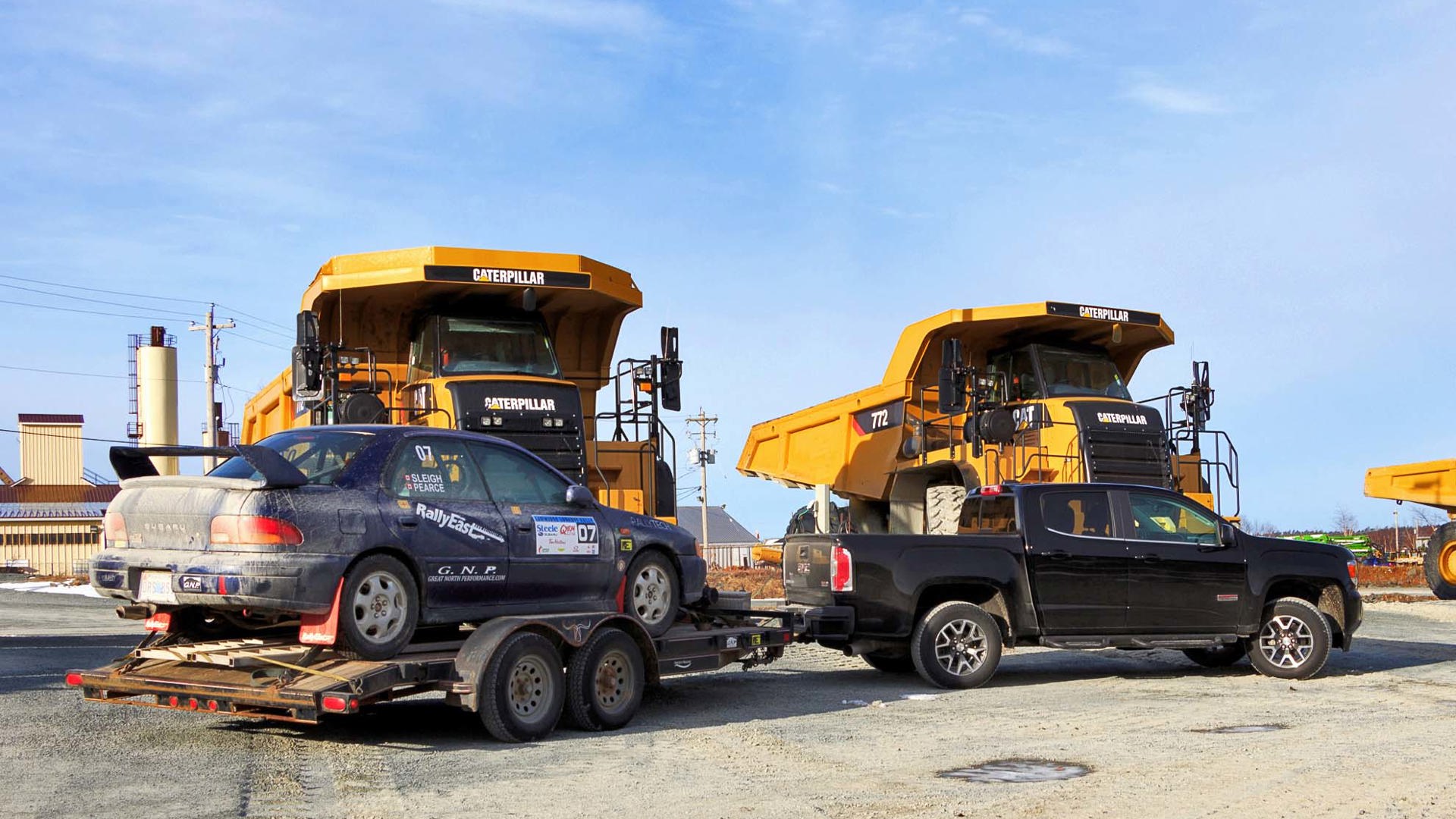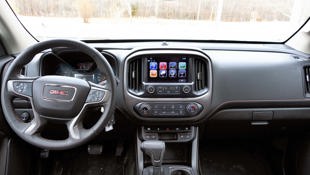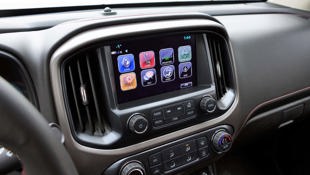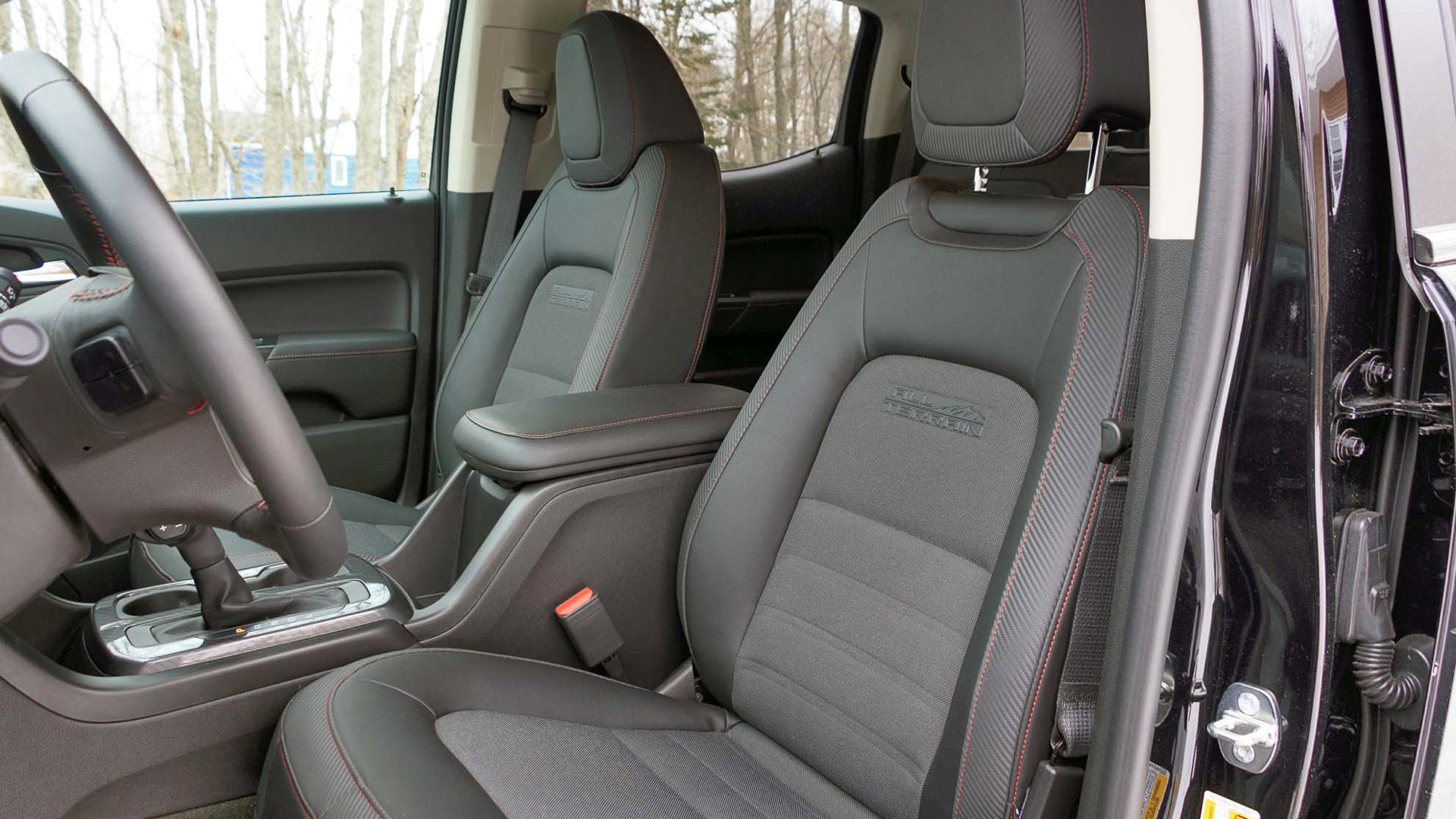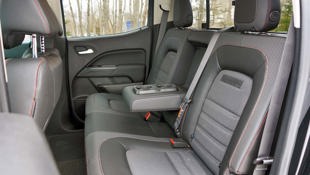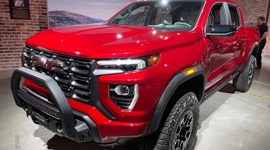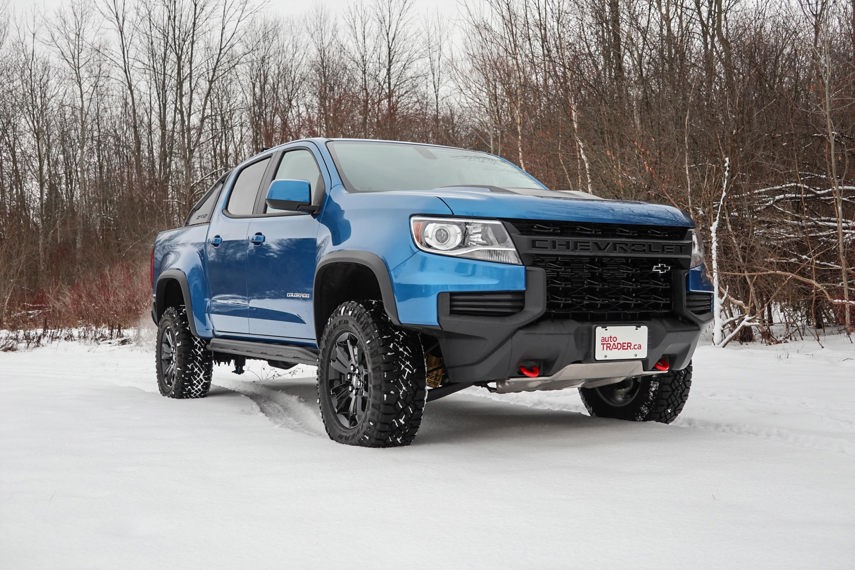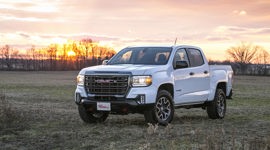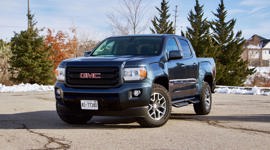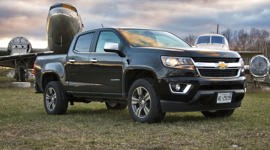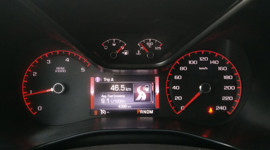 AutoTrader SCORE
AutoTrader SCORE
-
STYLING7/10
-
Safety8/10
-
PRACTICALITY7/10
-
USER-FRIENDLINESS7/10
-
FEATURES8/10
-
POWER8/10
-
COMFORT7/10
-
DRIVING FEEL8/10
-
FUEL ECONOMY7/10
-
VALUE7/10
I’m trying to find a pallet of bagged topsoil, but on a frigid and windy day in early March, I’m not having much luck. The smaller garden centres are closed, and even the big box stores look at me funny. Why am I looking for dirt about six weeks too early? Because I’m driving a 2017 GMC Canyon with a 2.8L diesel, and I’m trying to find out if a mid-size pickup can do everything that a full-size truck can do. That means hauling, towing, and a trip to the mall.
I’m trying to find out if a mid-size pickup can do everything that a full-size truck can do. That means hauling, towing, and a trip to the mall.
The first thing I wanted to do was to find a trusty canine companion to be my passenger/accomplice for the week. It turns out that it’s not easy to just “borrow” a dog for a week. Or even for the morning. The neighbours didn’t appreciate me asking to borrow theirs either. I thought about taking my wife’s cat with me, but one look from the cat and I knew that it would end poorly for both of us. Well, poorly for me, and poorly for the neat carbon-look leather trimmed seats.
A few calls around to some home-improvement stores and I had some luck. I need about a pallet load of topsoil to fill all the holes and ruts in my back lawn (ruts I made with a tractor three summers ago), and it’ll take trips to multiple stores to get it. My first load is about 500 kg, surprisingly close to my truck’s 665 kg max payload, but the Canyon doesn’t seem to notice it. The 0–100 time might have been a touch slower, but the rear suspension didn’t sag and the ride didn’t change.
That 665 kg might sound like a low payload for a truck, but the full-size Ram 1500 EcoDiesel manages even less. Its payload for a crew cab ranges from 591 kg to just 459 kg. The V6 gas Canyon adds about 30 kg to the diesel’s number and regular cab models do a little better again.
Loaded bed or not, the Canyon gives a bouncy ride. This is an All-Terrain package truck, which means it has the Z71 off-road suspension. It’s not the Colorado ZR2’s super-fancy DSSV shocks, but GM says that it’s slightly more softly suspended than the base model. It’s still not what I’d call soft, and is a little bit too bouncy, especially on bigger bumps and dips.
This truck might be 150 mm narrower and 432 mm shorter than its big brother Sierra, but it still feels and rides like a real truck. It definitely feels lighter than the Sierra, but it’s not going to give you the SUV-like ride of a Honda Ridgeline. Sales figures seem to show that buyers want a truck that’s comfortable but still a truck. The Canyon delivers on that request.
It was time for some off-road driving. This is a brand-new truck, with shiny black paint. Paint that doesn’t have any swirl marks or scratches on it. I don’t want to be the first one to put them there, so I’m not going to take it rock crawling or mud bogging down a powerline road. I did find some heavily potholed and rutted roads to take it down, and the Canyon handled it well. The ride is bouncy but absorbs the worst of the road without any harsh impacts. It has a low-range transfer case to crawl up the steepest hills, and hill-descent control to crawl back down the other side.
Anyone who has ever worked at a drive-thru knows the pain that is a diesel truck sitting at the speaker: the rattle and clatter block out any chance of hearing the order. The Duramax-powered Canyon adds sound insulation to keep it quiet on the inside. There is a thick blanket of insulation under the hood, and GM has added damping materials to the valve covers and oil pan. There is even an extra damper in the torque converter to help quiet the diesel beast. All of that effort pays off. You can tell that it’s a diesel at idle and while accelerating, but during steady in-town or highway driving the engine is nearly silent.
From in the cabin, at least. But how does it do at the drive-thru? Will I get my coffee or will I have to park and walk in? I went to my local coffee shop and asked the friendly folks at the window. To make sure I wasn’t getting someone who was just trying to be polite, I went through a few times through the week. Good news for GMC, the 2.8L Duramax diesel is drive-thru approved.
When my friends found out I had a truck, suddenly they all needed help moving. I wasn’t surprised, but I only had time to help out a couple of them. The box is just a few centimetres too narrow to hold a queen-size box spring flat, but there is plenty of room for stuff. The sleeping bed didn’t stick out too far past the side of the cargo bed, and the four big tie-down eyes in the cargo bed made strapping everything down a cinch.
The soft-open tailgate means that you don’t need to be a bodybuilder to close it, and you don’t need to worry about it slamming open either. The moulded steps in the bumper corners are really handy for hopping up and down to get bed access as well. If you need more versatility for your cargo carrying, GMC offers some GearOn accessories that divide up the bed into compartments and can add roof-height racks for carrying longer items like canoes or lumber.
At 1,138 mm between the wheel wells, the Canyon can’t fit a full-size sheet of plywood flat in the bed. Then again, neither can the Toyota Tacoma or Nissan Frontier. The last-generation Canyon had a two-position tailgate that would lock it slightly closed. That let big sheets sit flat on the wheel arches and the tailgate. The new model won’t do that. It does have the fairly standard 2-by-6 pockets moulded in the bedsides to help support flat sheets of materials, but the tiered tailgate is missed.
The bed is deeper than Tacoma or Frontier, which can make it a little more difficult to reach in over the side. The benefit is that you can hold more stuff, as I found out when I helped a friend move somewhere in the range of 700 boxes of cookies. The cookies stayed safely under the bed rails, out of prying eyes and hungry fingers.
On the weekend, it was time to do some towing. There was a rallycross event going on at a local quarry, and I have a few friends with stage rally cars. We loaded their rally car on a trailer and hooked up the Canyon in place of the 6.0L V8 Suburban they normally use. A roll-caged Subaru 2.5RS, double-axle trailer, and gear weigh in at a little over 2,400 kg. The four-wheel-drive diesel Canyon is rated to tow 3,454 kg, so I was getting close to the limit but had a good margin. The back-up camera gives a clear view of where the hitch and trailer are, and the integrated trailer brake took less than 10 seconds to adjust, and we were on our way.
The Canyon handled the weight of the trailer with no extra effort. It was a little slower than unloaded, sure, but it moved well and accelerated surprisingly quickly, even at highway speeds. Parked next to Silverado 1500s and F-150s in the quarry, the Canyon seemed to sag much less than the bigger trucks when loaded.
The Duramax diesel has an exhaust brake that becomes more aggressive when towing. It would maintain speed going down steep hills, and a tap of the brakes to let the truck know you wanted to slow down more worked well to get everything stopped. The stability control system changes modes to help control the trailer if it gets out of shape, and even the turn signals get involved. When a trailer is attached, the three blinks of the signal for a lane change turns to six, reflecting the extra time it takes to change lanes with the extra length. The wheelbase of the truck is long enough that it was still stable, but short enough to make turning and reversing the trailer easy.
That covers all of the truck work, so how does this truck handle doing what a real truck does? I mean driving a couple of passengers around with a hockey bag in the bed, going to the mall, or a trip to the grocery store. The Canyon is smaller than its big brother Sierra, but it’s hardly small. Sitting beside an immaculate late-90’s Chevy pickup at a traffic light, I was surprised to see that I was looking at the top of his roof. This truck is taller than all but the last generation or two of full-sizers. When it comes to width and length, it’s a different story
This truck is narrower and shorter than a full-size truck. It feels easier to park and maneuver because it is. There’s a back-up camera for parking, but the airy cab gives good visibility all-around. The size means that it fits easily into parking spaces. I did almost take the roof off trying to get into the garage I normally use at the mall, but that’s my fault, not the truck. I forgot I was in something this tall. The smaller cabin is still roomy, I can sit in the back seat of this truck with the front seat adjusted very far back, but it still fits almost anywhere and is easy to maneuver.
My favourite part of trucks is always the interior. Not the headroom, because while some trucks are surprisingly short on that, the Canyon isn’t one of them. I’m talking about the controls. Great big buttons and knobs to control everything. Controls so big that all but the heaviest winter gloves are no hindrance to using them. And nothing essential is hidden in touchscreen menus that are difficult to operate bare-handed, and all too easy to cover in fingerprints.
Mind you, the 8.0-inch touchscreen in the Canyon is one of the better ones. I’m a big fan of GM’s infotainment system, badged in GMCs as Intellilink and in Chevrolets as MyLink. It’s intuitive, but more importantly it’s responsive. There’s no waiting for commands to take effect, even using Apple CarPlay on my older iPhone 5.
So how did this mid-size diesel do at the pumps? It showed 11.2 L/100 km after nearly 600 km of driving that included 87 km of towing (computer said 12.8 for those), about 200 km of hauling, and more time than normal spent idling for photos. Cruising on the highway, 8.5 L/100 km is achievable. Amazing numbers for a truck, especially loaded.
While the power figure seems low at 181 hp, the massive 369 lb-ft of torque makes up for it and then some. There’s a slight wait when you press the go pedal, but then there is a massive surge of torque that moves you forward. It’s not fast, but it feels like it is. Once you’re moving, there is plenty of grunt to merge and pass. It does well for maintenance too. Unlike some of the full-size diesels that can take 12 litres or more at every oil change, this four-cylinder uses a car-like 5.7 litres.
The GMC Canyon is a bit of a surprise. It’s a smaller truck that can do almost everything the big ones can. It can haul, it can tow, it can go off-road, and it can take five people to get a double-double. If you’re still thinking of mid-size trucks as being the size of an S-10 or a Ranger, or even the cramped cab of a Tacoma, you’ll be surprised by this truck. It doesn’t feel too big or too small, it feels right-sized. It rides well for a truck, and while the diesel won’t set any speed records, it feels more powerful than 181 hp should. If you don’t tow more than 3,455 kg, then this truck is really worth a look. If you enjoy paying less for fuel and want the best driving experience, then the diesel is a must-have. Sure it costs more, by $4,390, plus you’ll need the mandatory All Terrain package and SLE package for a total of $6,215, but the shove in your back is worth it. Plus you’ll want the All Terrain’s nicer seats and limited-slip differential anyway.
| Engine Displacement | 2.8 L |
|---|---|
| Engine Cylinders | 4 |
| Peak Horsepower | 181 hp @ 3,400 rpm |
| Peak Torque | 369 lb-ft @ 2,000 rpm |
| Fuel Economy | 12.1/8.4/10.4 L/100 km cty/hwy/cmb |
| Cargo Space | 5'2" box |
| Model Tested | 2017 GMC Canyon Diesel 4WD Crew Cab Short Bed |
| Base Price | $38,295 |
| A/C Tax | $100 |
| Destination Fee | $1,700 |
| Price as Tested | $48,135 |
|
Optional Equipment
$8,040 – Spray-on Bedliner $525; All Terrain Package $1,440; Engine Block Heater $150; 2.8L Duramax Diesel $4,390; SLE Convenience Package $385; Step Bars $875; Trailering Package $275
|
|
